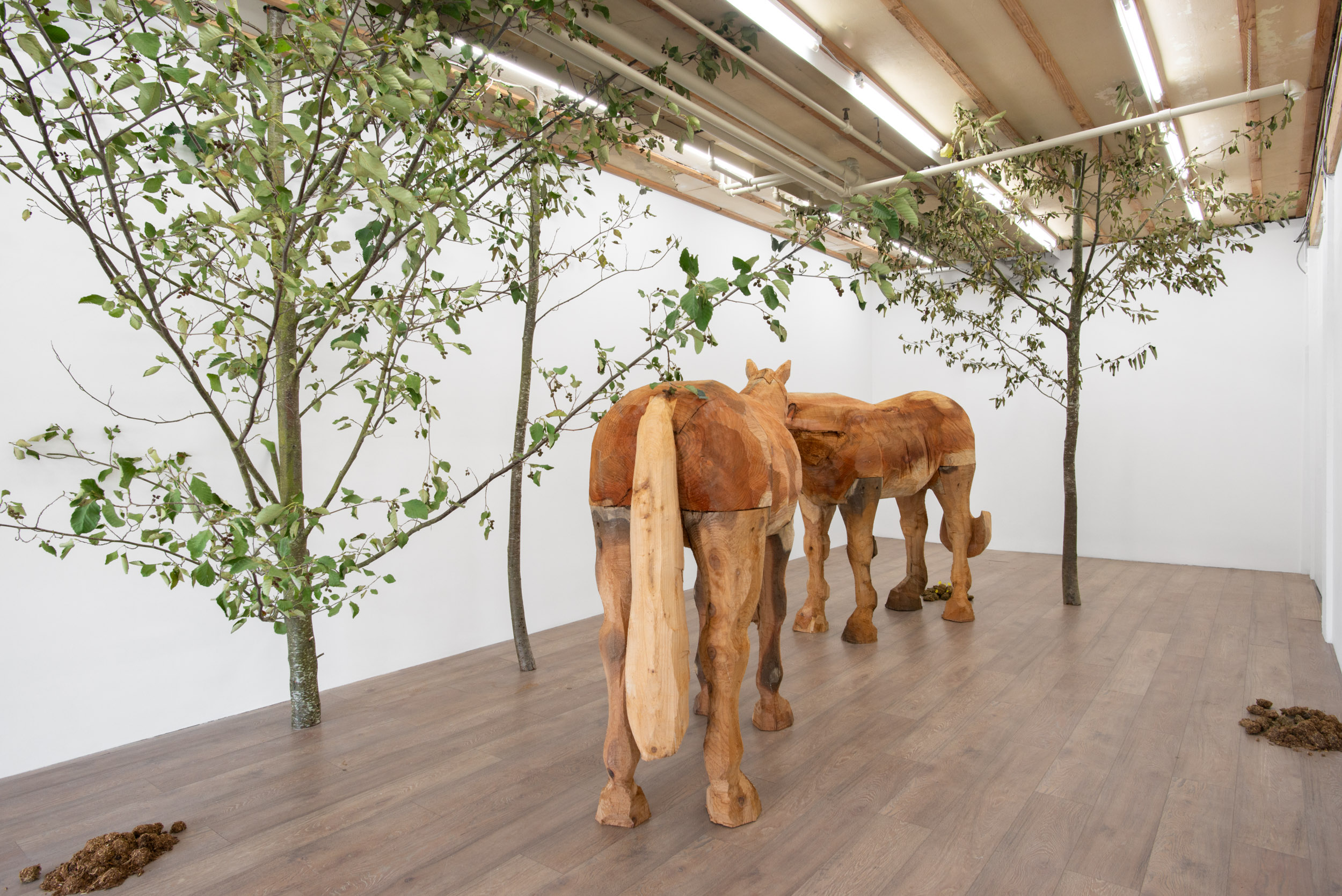
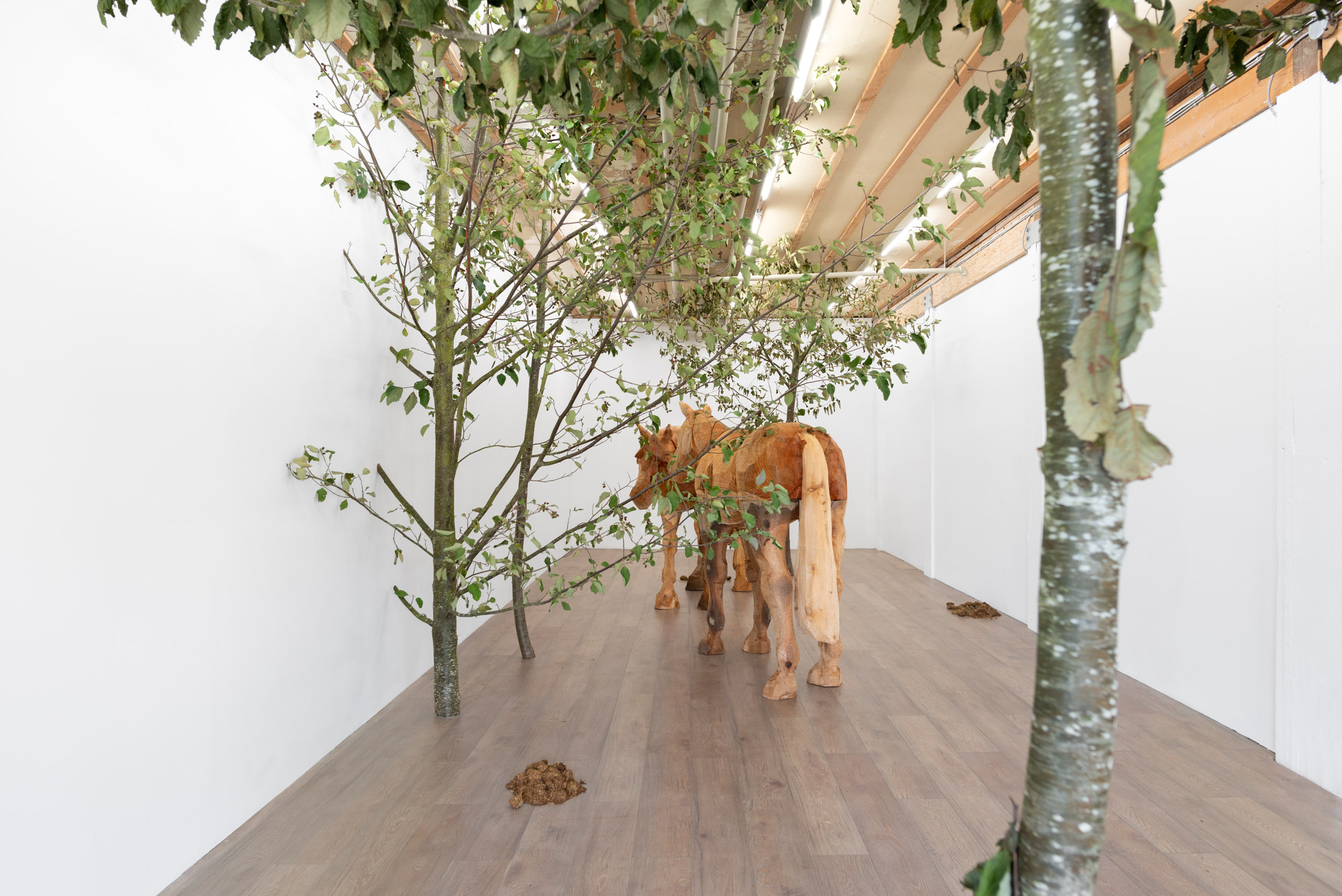
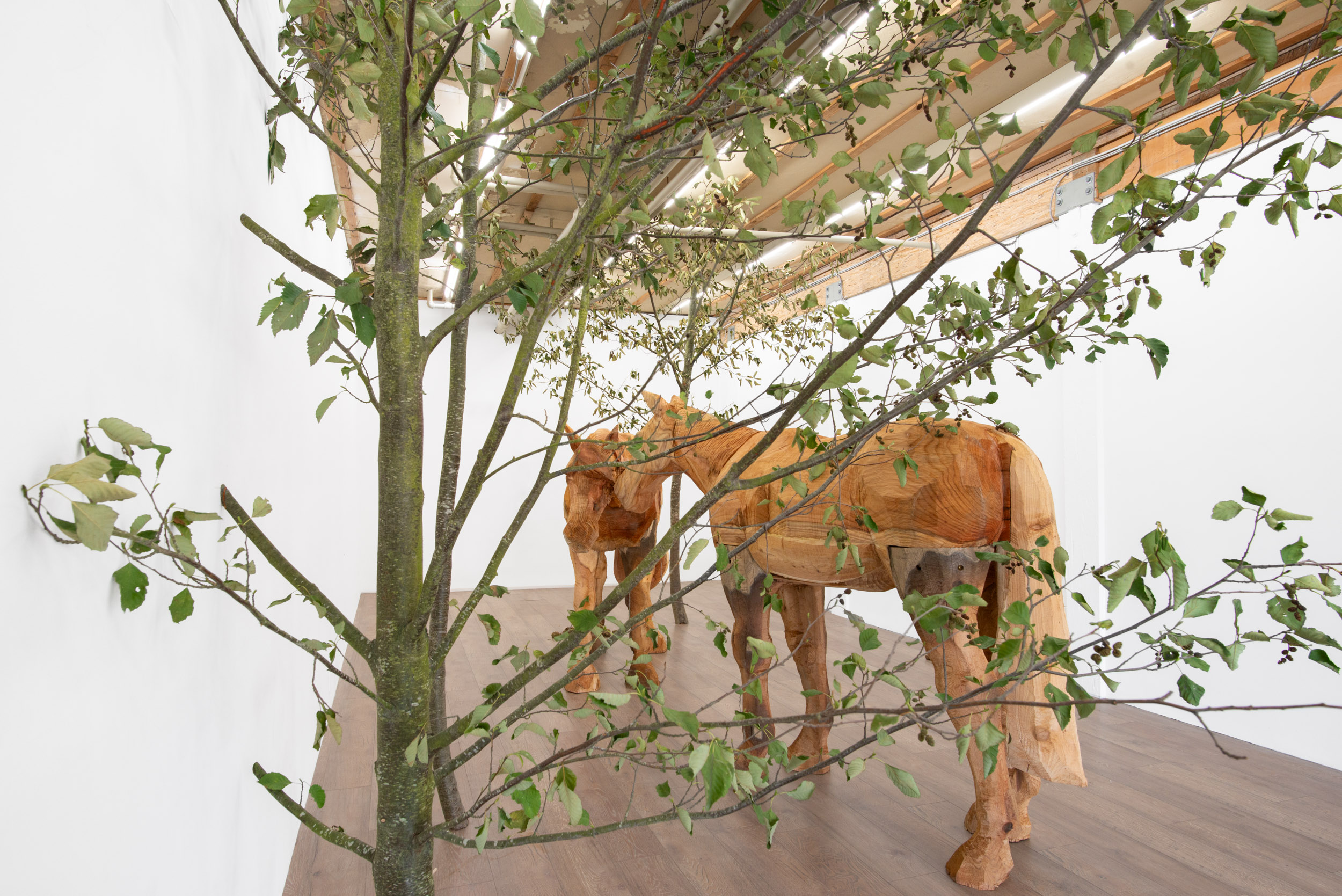

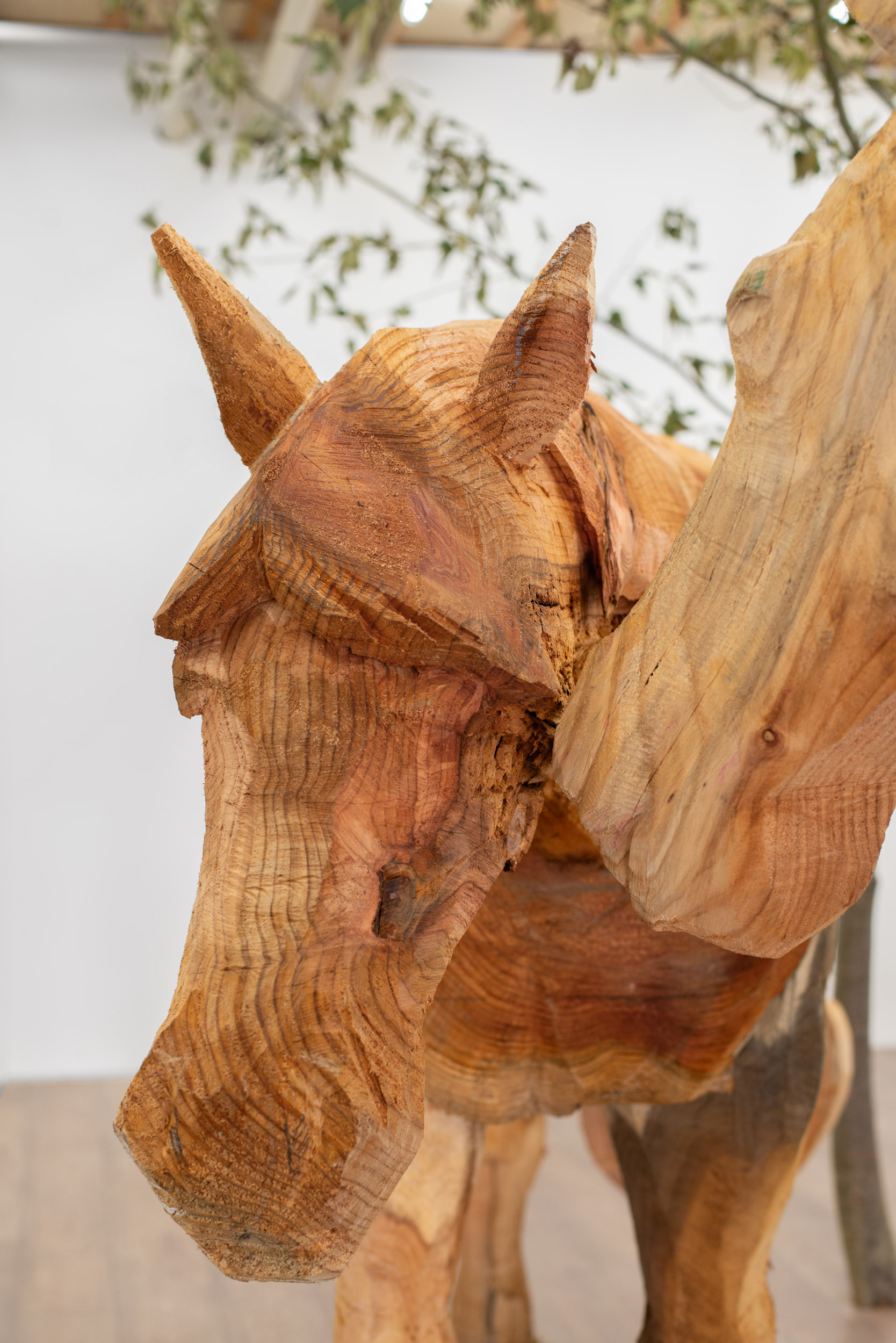
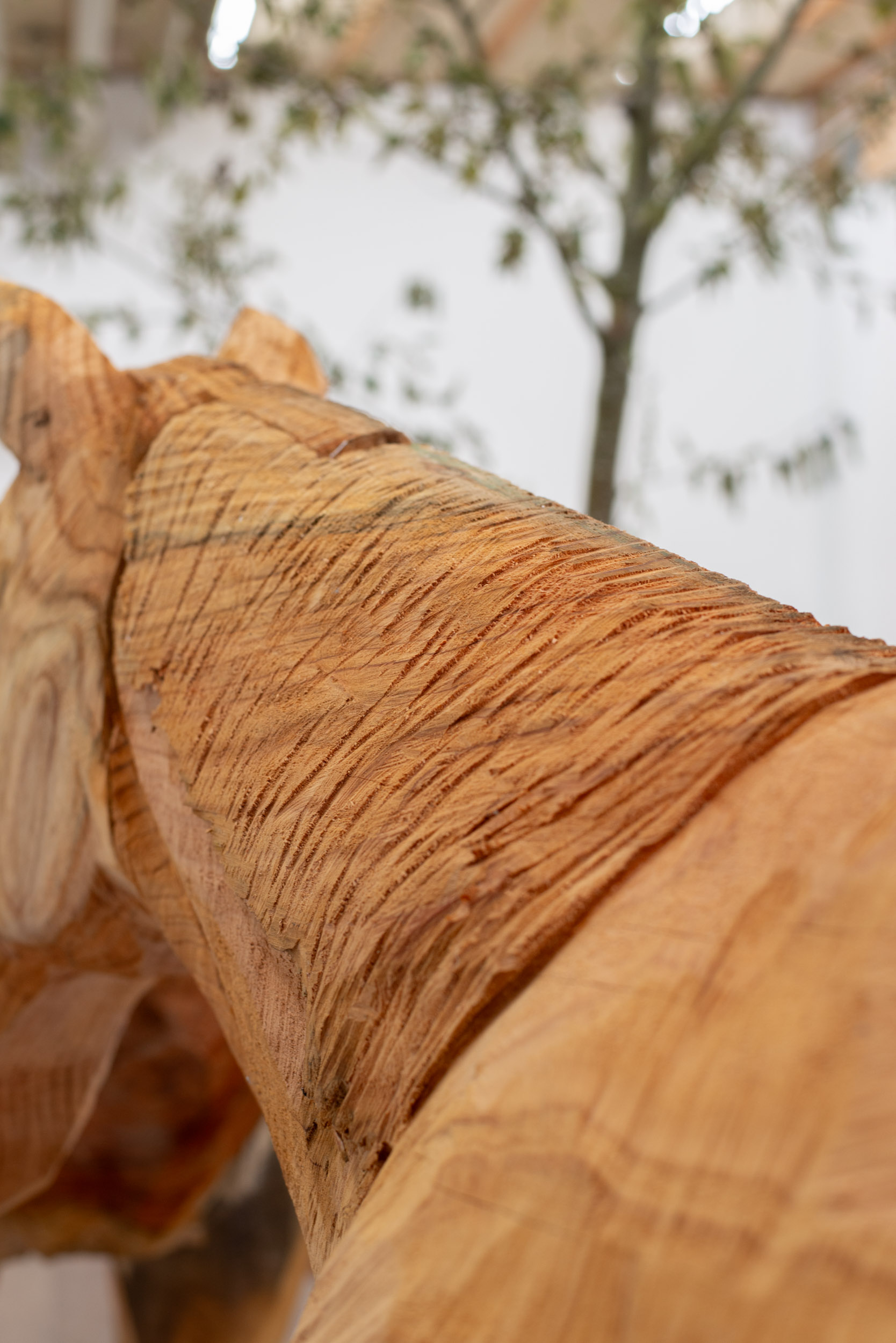
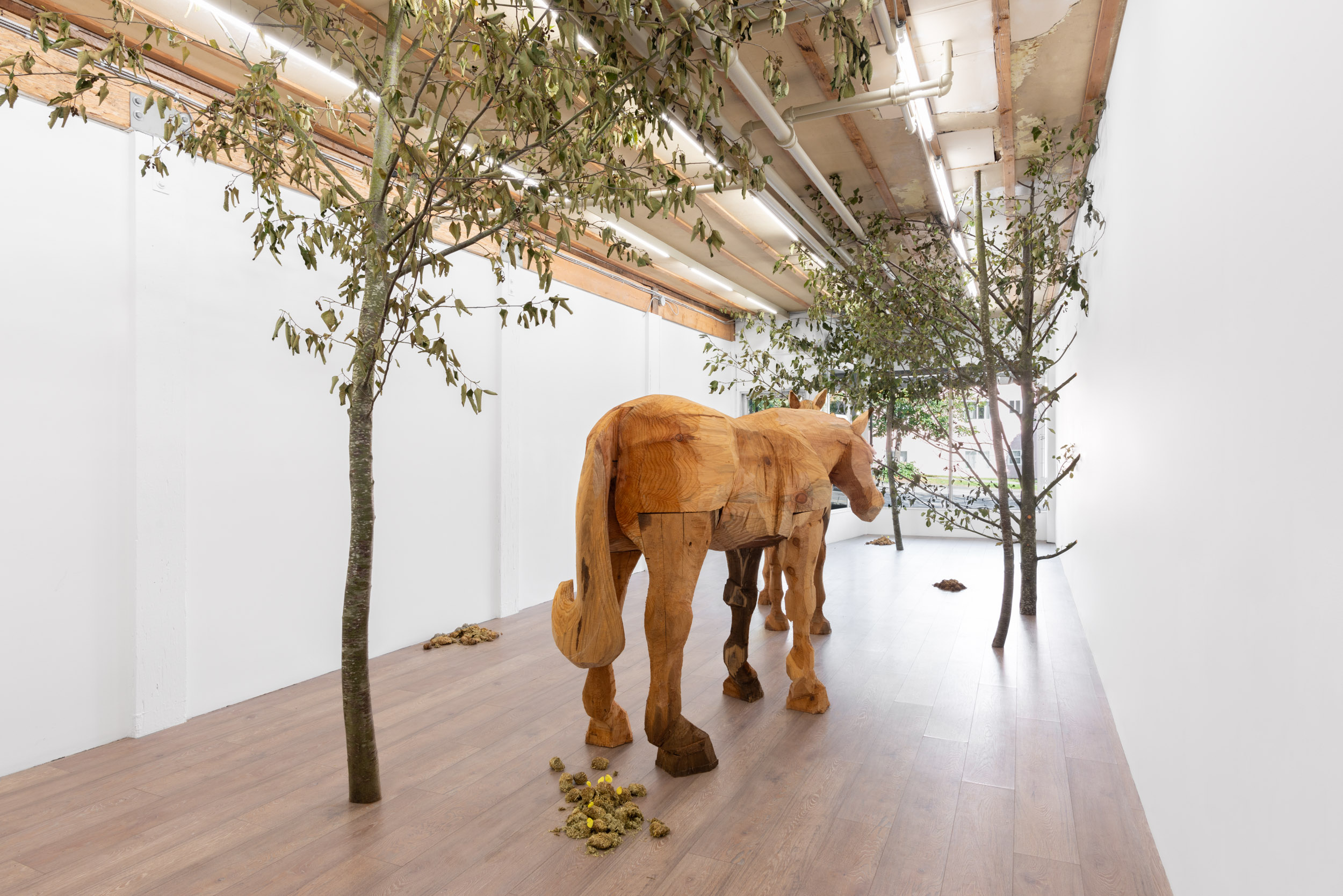
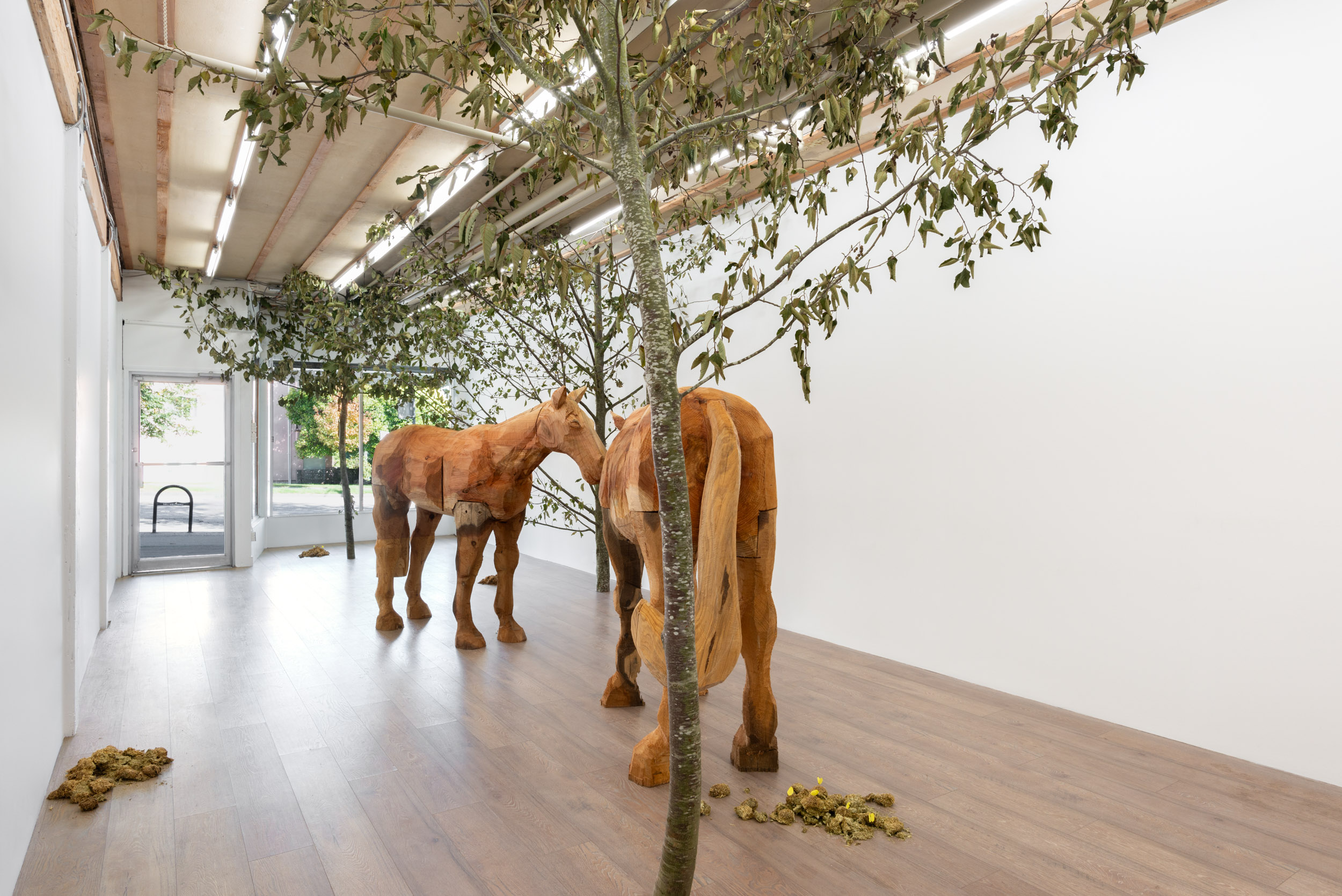
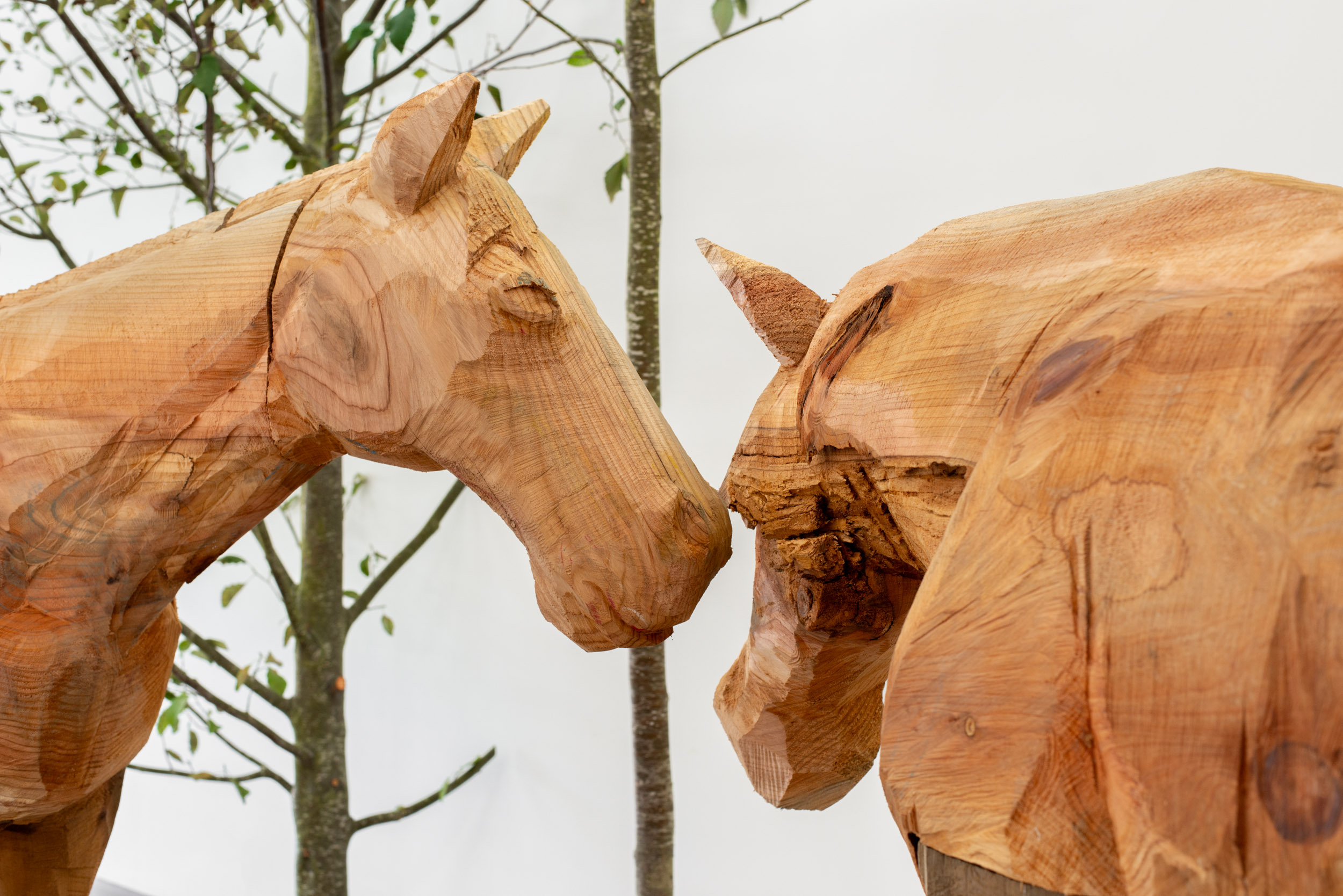
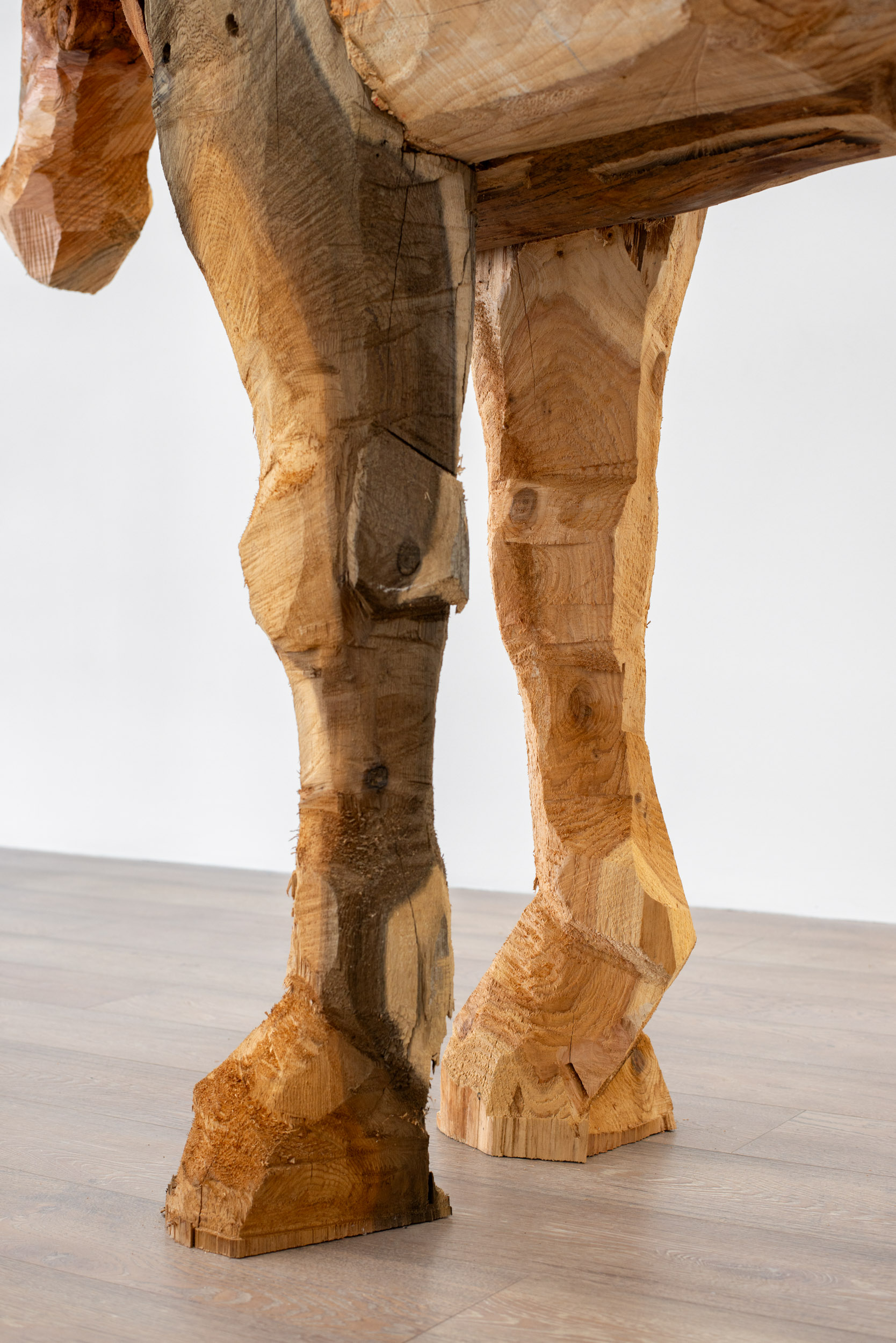
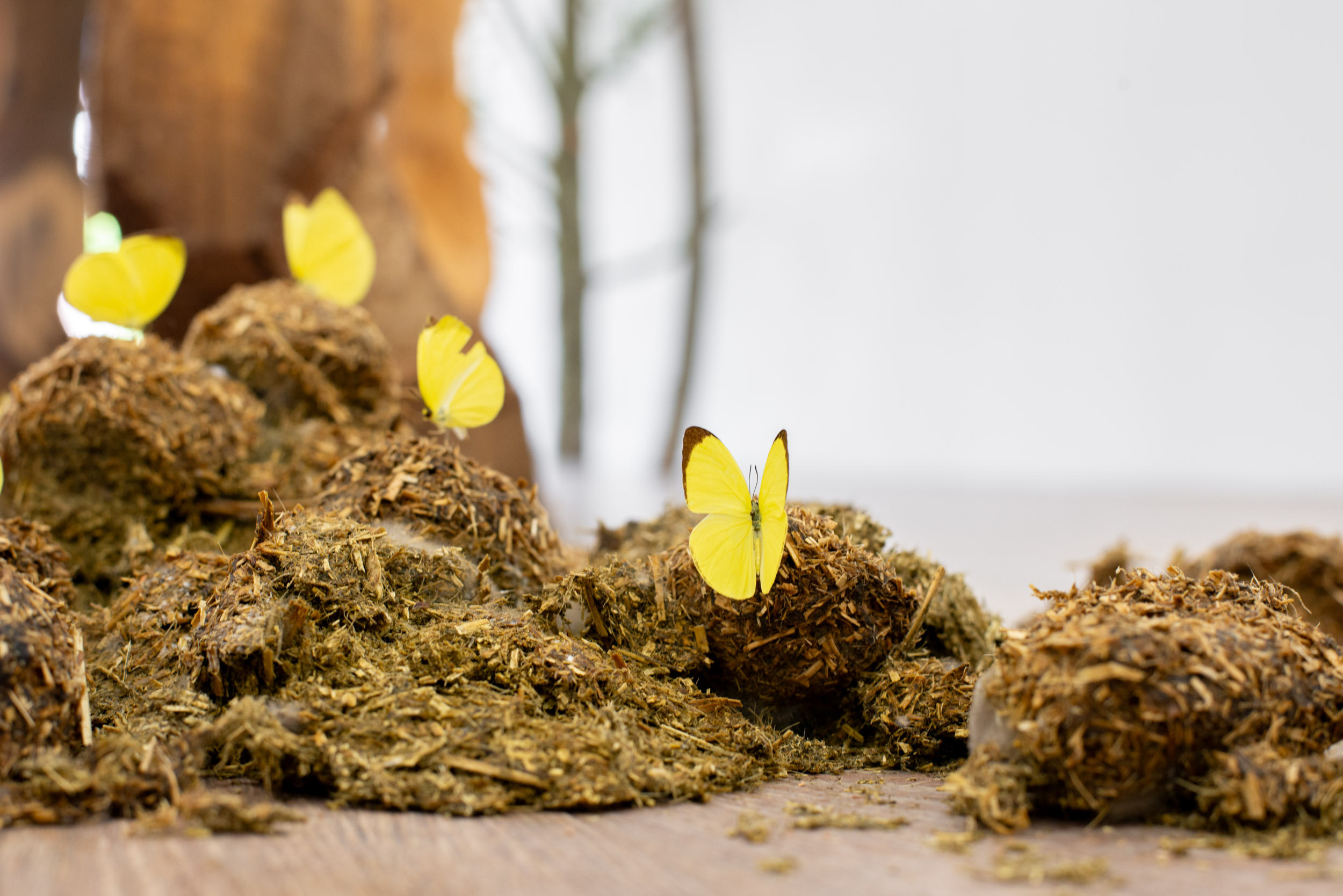
Graham Landin: Tight Span
September 13–November 30, 2024
Opening Reception: Friday September 13, 7–10pm
Exhibition Map
I returned from the trip a little dizzy and disoriented, replaying the experience in my mind and examining it from all angles. Ideas came to me in flashes: horse packs piled high, old-fashioned pack saddles and oilskin tarps bound tightly with double diamond hitches. I pulled a small sketch from my luggage that I had whittled by the fireside. It was far from perfect, yet serviceable. In it I could see the horse. I was surprised by the emotions I felt when bidding farewell to my friend who had carried me through smoky valleys, over alpine passes and across the braided river.
Recalling our early morning cat-and-mouse routine, in which I would calmly follow him with an outstretched hand, the other behind my back holding the halter that I’m certain he knew was there. Just when I thought we had reached an agreement, he would bolt on me. After a few rounds of chase, he would give in and bow his head to take the bit. This ritual took place each morning, yet he would always agree to carry me further down the trail.
While riding, he liked to test my grip on the reins by sneaking bites of grass. I focused on maintaining gentle contact, enough to remind him I was there—although whether I was or not, I knew he would follow the pack. I never felt bad about robbing him of his roadside snacks, because in the off-hours he would be turned out to graze freely.
On a rest day, the horses lingered on a sandbar, their bodies relaxed and quiet, huddled together for protection. In the silhouette of the herd, I could make out close friends grooming and nuzzling each other. Free from the fetters of saddles and bridles, their demeanor suggested lazy bathers standing knee high in cool waters to best the Sunday heat. I reflected on learning to ride in stables that only turned out horses for short, sporadic periods, and how their resentment was palpable in the holes they had kicked through their stalls’ walls.
What began as an attempt to hold on to my memories, morphed into a story about two friends who peeled away from the pack after being set free to roam for the evening. In a tight span, the partners commiserate on work and comfort each other against all else. Much like ourselves, who, after the whistle blows, spend our evenings striving to reclaim our natural state only to be pulled back into the grind come sun up.
– Graham Landin, August 2024
Graham Landin (b. 1982) is a visual artist and carpenter who lives and works in Richmond, BC. Drawing influence from classical antiquity, off-grid culture, folk art and a variety of modernisms, Landin makes pavilions, sculptures, furniture objects and wall reliefs. Since relocating his studio to agricultural land in 2018, he has employed a chainsaw to work swiftly at the scale of the human body. His work has been exhibited in Canada and the United States, and he has created over thirty sculptures for Stüssy International’s flagship stores.


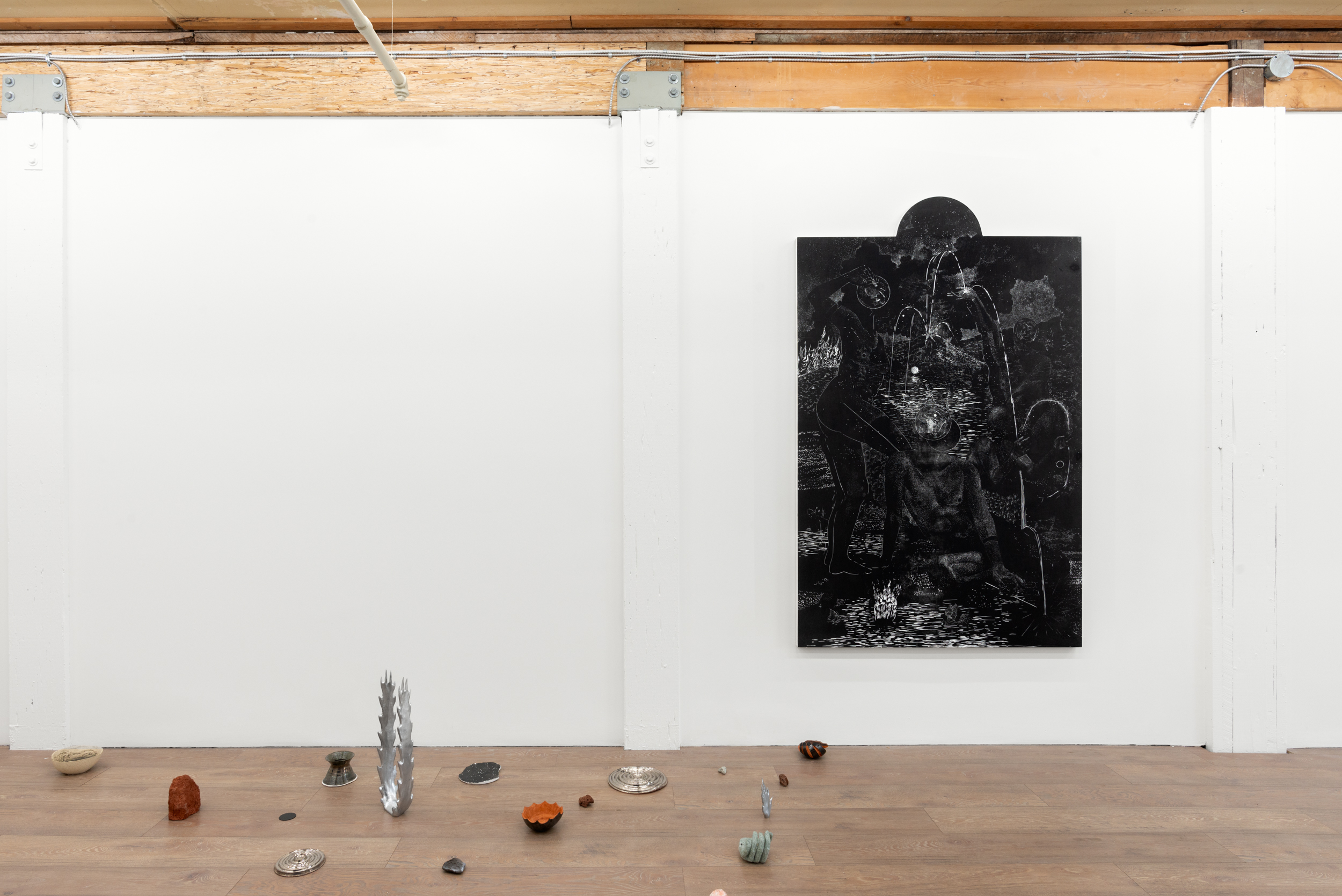

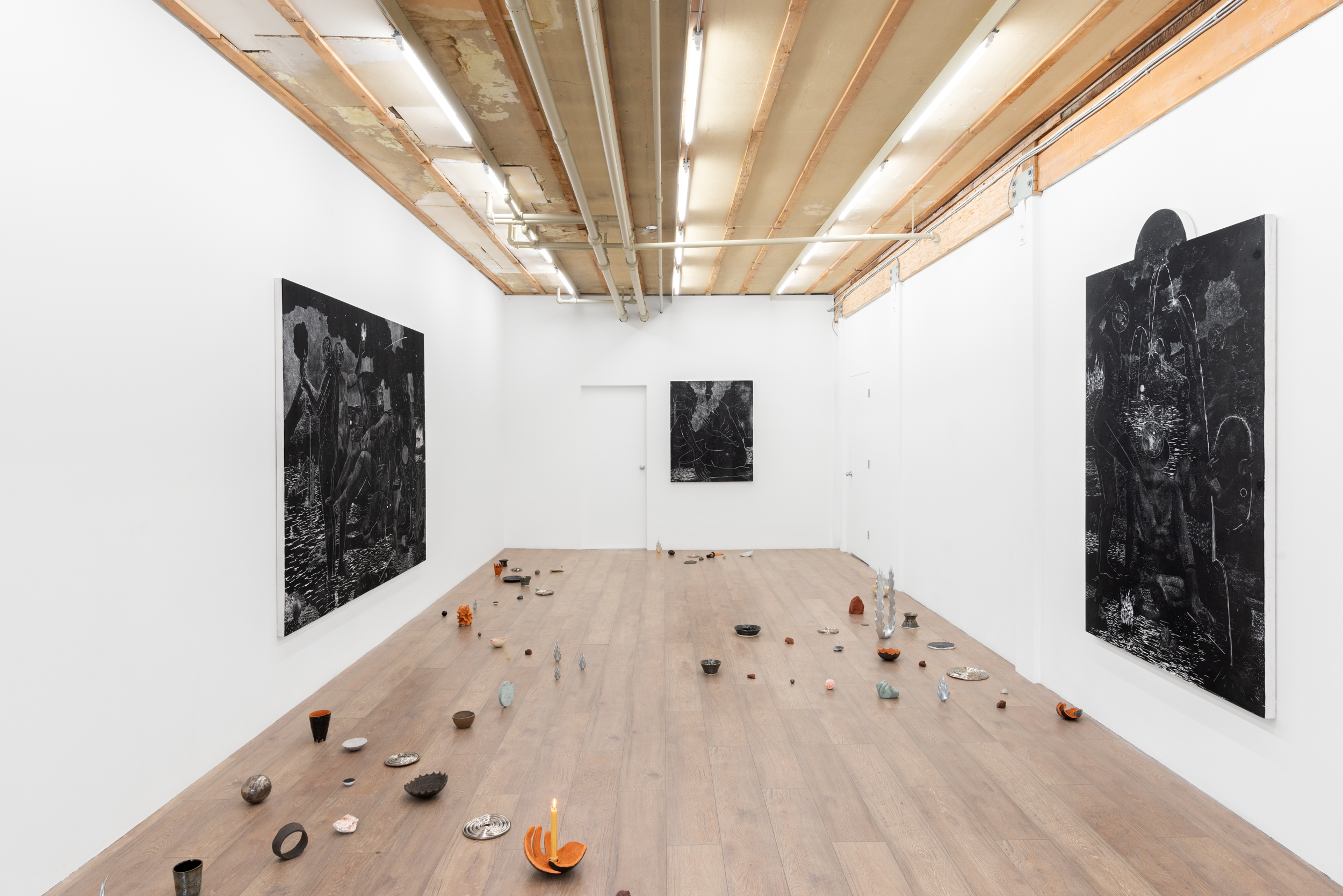
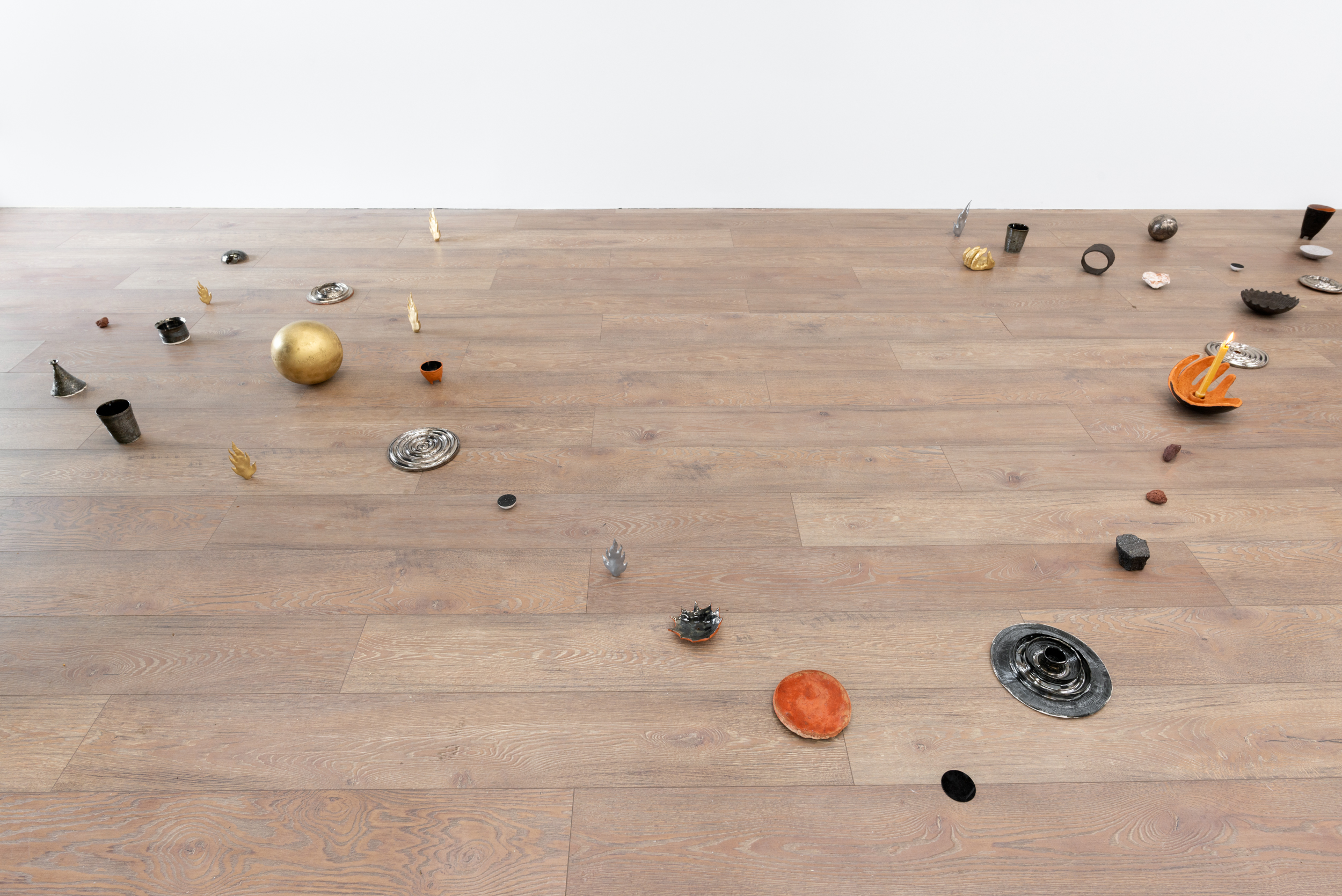


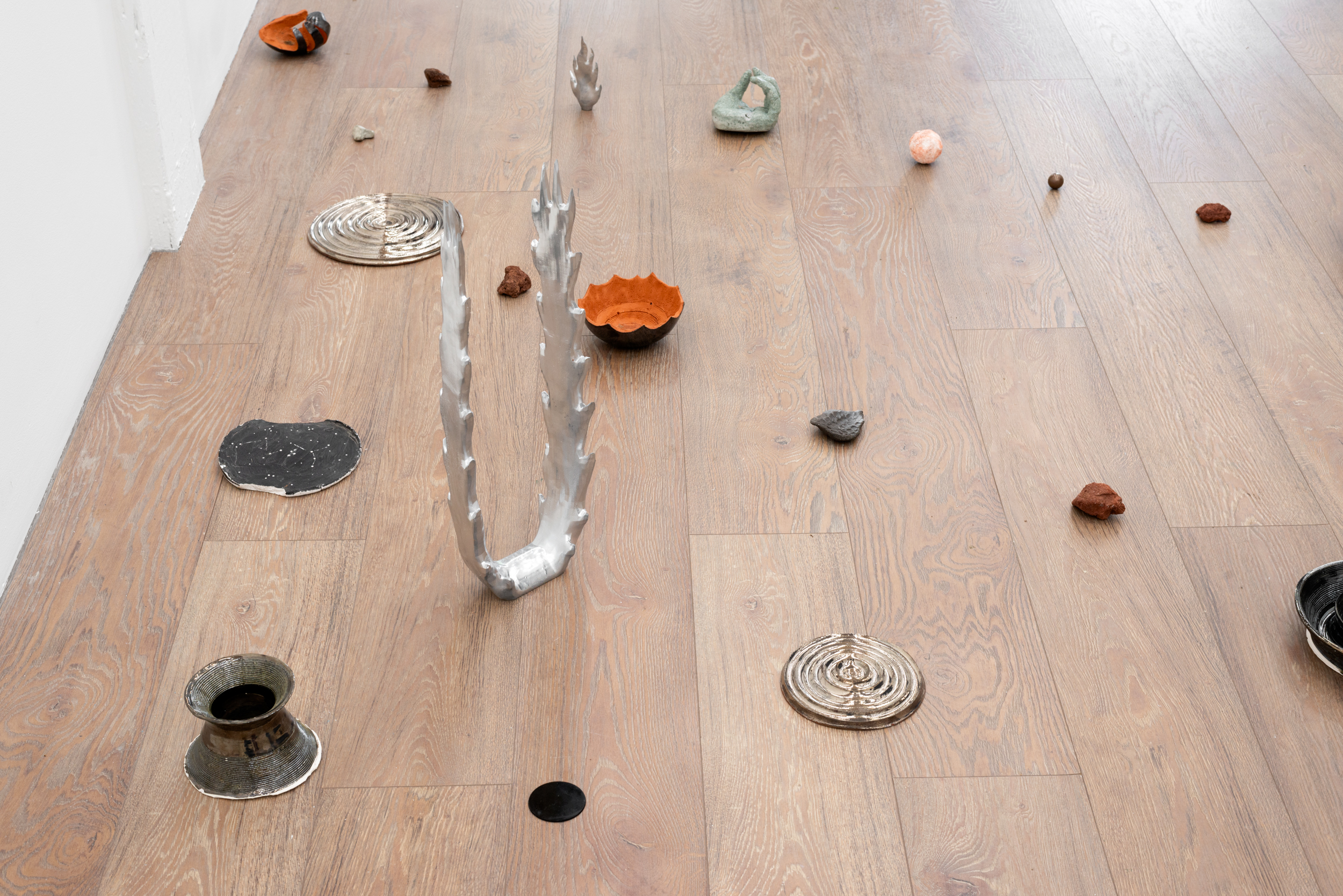
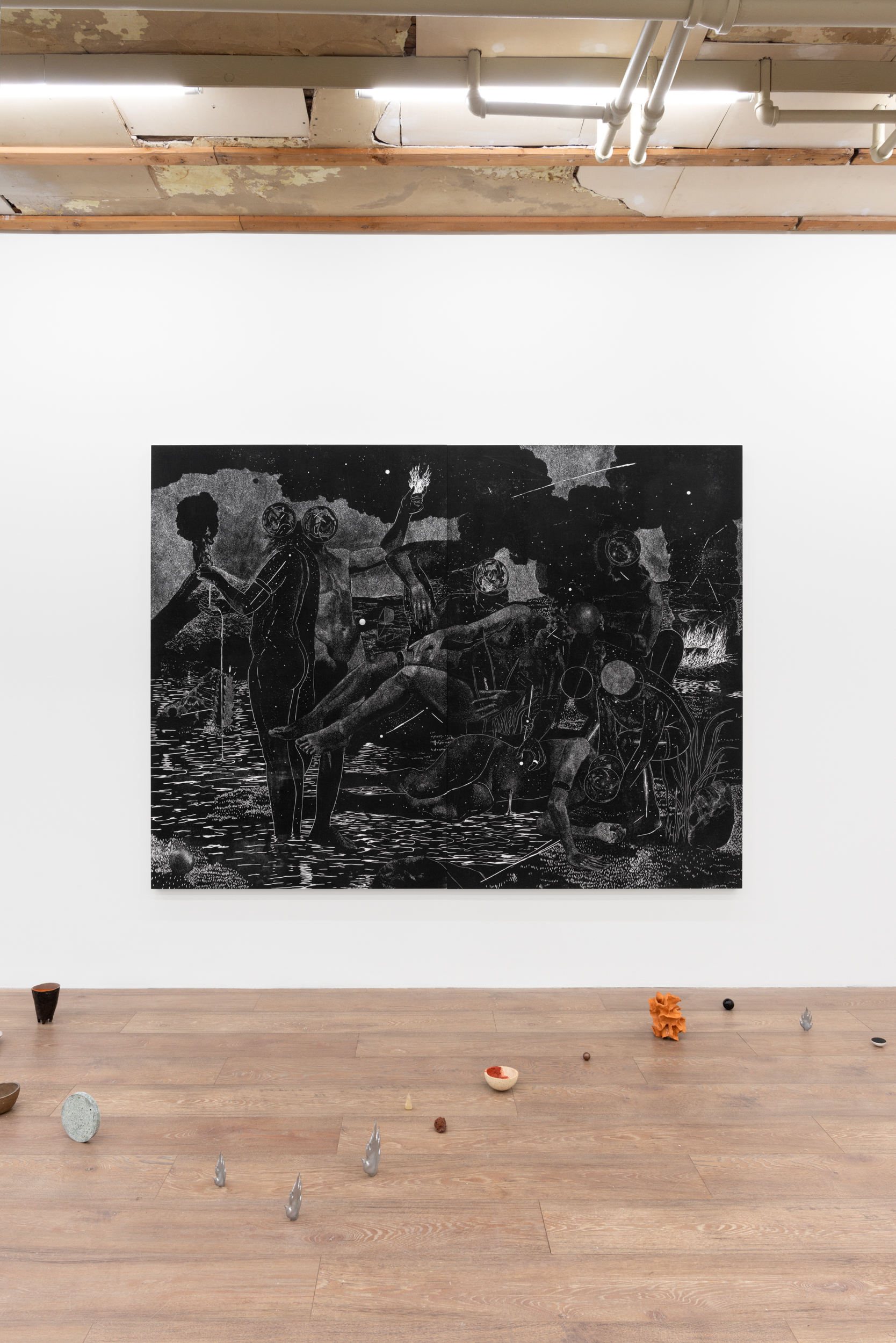



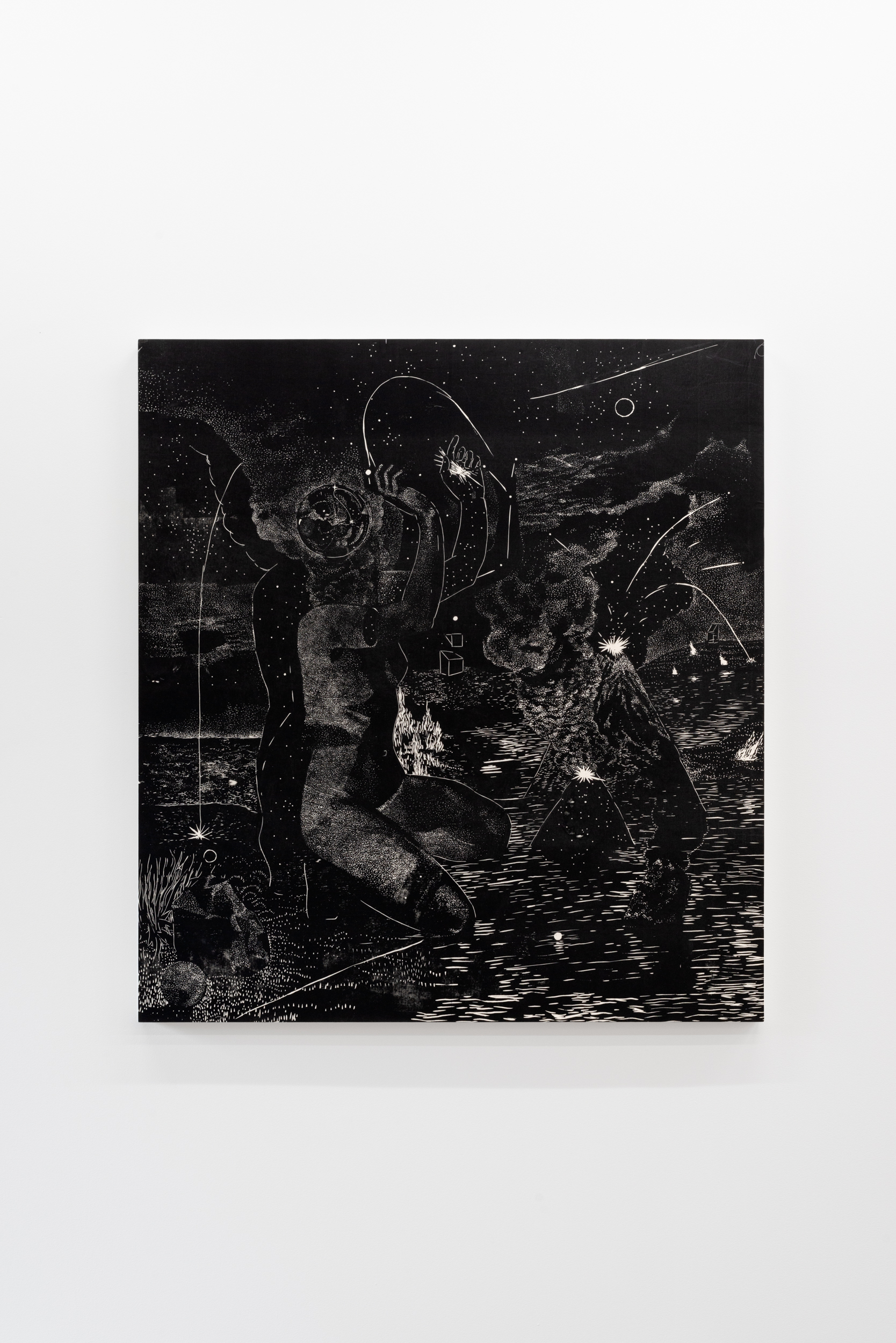


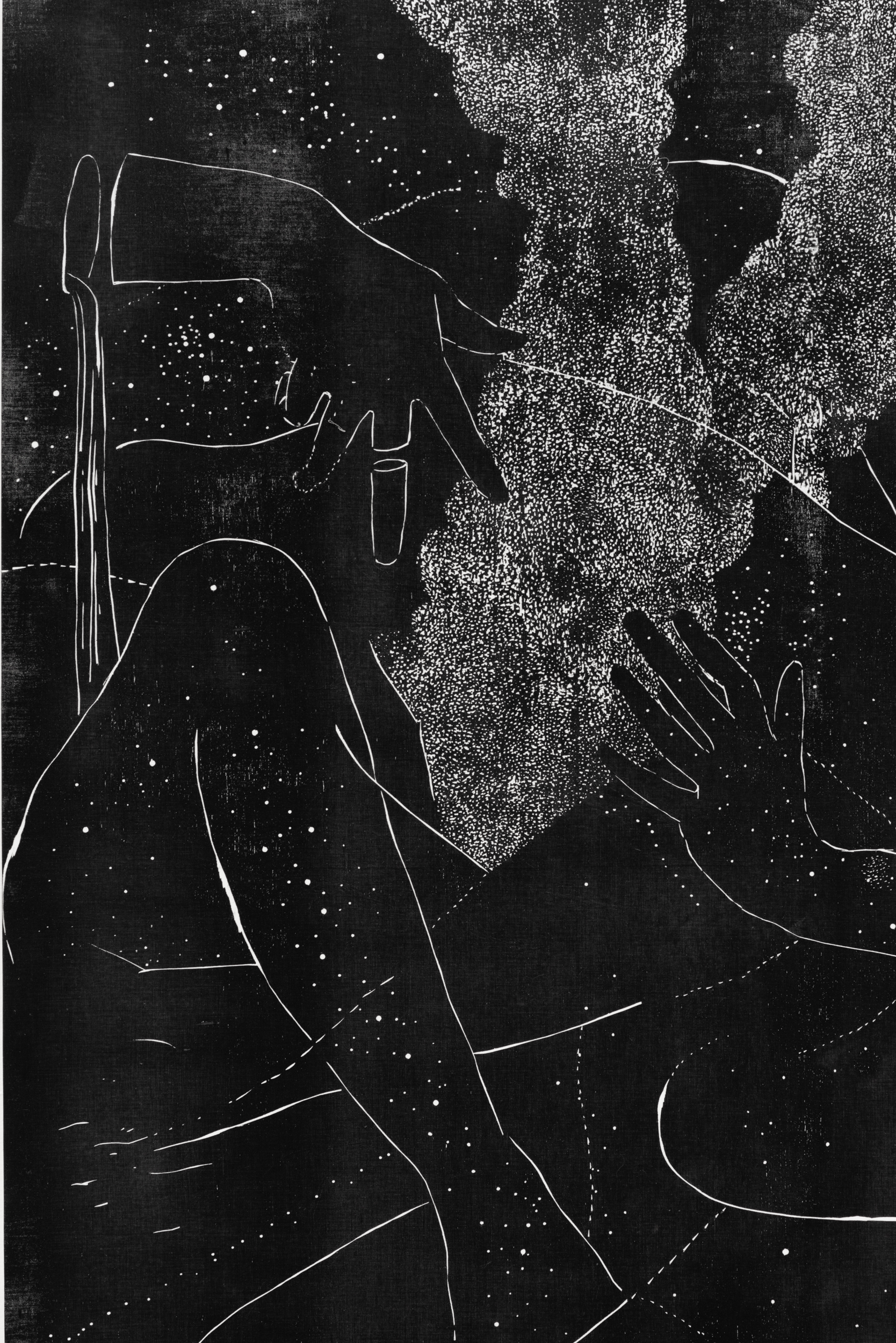


Sergio Suárez: Aphelion
June 28–August 17, 2024
Exhibition Map
Pale Fire is proud to present Sergio Suárez’s first exhibition in Canada. The exhibition coincides with the earth reaching its farthest position from the sun in its orbital cycle. This occurs annually, roughly two weeks after the summer solstice. The phenomenon is called aphelion, a term composed of the ancient Greek words apo, for “far,” and helios, for “sun.” In Greek cosmology, Helios is the god of the sun and vision. He is an omniscient witness who oversees oaths, magic and spells.
Cosmology is a means of organizing human emplacement and connection in the universe. Philosopher Frederico Campagna has described it as a melodic line that imprints a sense of harmony onto the inherent cacophony of existence. Suárez is curious about the diverse melodies that people have composed throughout history. His compositions are densely saturated with icons, symbols and gestures that conjure the traditions of frescoes, mosaics and codices. His prints and installations produce encounters between visual lexicons that open up how these systems have been coded, metaphysically, socially and politically.
Suárez works extensively with woodblock printmaking—a craft that he refers to as “composing in time.” He employs minimal sketching and develops images slowly, through an accretion of marks. His confidence in image-making was nurtured through his training in geometry and drafting, acquired during his time studying aeronautical engineering. Air currents and electromagnetism introduced Suárez to how disciplines such as meteorology and physics give structure and narrative to intangible phenomena. This experience piqued his interest in other cultural and linguistic traditions that seek to articulate the means and meaning of planetary origins and functions.
The sun—as the primary source of light and heat, a measure of time and a marker of place—features in origin stories (called cosmogonies) from around the world. The Mexica cosmogony of the five suns, for example, organizes time into five cycles of creation and destruction, ruled by five sun gods. We reside in the epoch of the fifth sun, governed by the war-like god Tōnatiuh, whose reign is motivated by movement and whose demise is predicted to be caused by earthquakes.
Our era is governed by science and rationalism. Though predicated on the notion of a “stable truth,” these melodic lines are no more resolute than those that preceded or parallel them. At the limits of technical perception and empirical reason is an edge that may open up onto other melodic lines, such as the echo of Tōnatiuh’s rage or Helios’s spells. Suárez’s matrices are the imaginal architectures(as Campagna calls artworks) that invite us to encounter existence at the limits of ocular vision, where a form of insight—perhaps akin to the omniscience of the sun— invites us to enter the magic of being.
Sergio Suárez (b. 1995) was born in Mexico City and is based in Atlanta, Georgia. His practice spans printmaking, sculpture, painting and installation and is informed by baroque intricacy, theological iconography and traces of Mesoamerican material cultures. Suárez’s work has been exhibited in Atlanta at Whitespace Gallery, Day & Night Projects, THE END Project Space, the Consulate General of Mexico in Atlanta and Atlanta Contemporary. Internationally, he has show at the Woolwich Contemporary Print Fair in London, England; Haugesund International Relief Print Festival in Norway; Oped Space in Tokyo, Japan; and Ionian Center for the Arts and Culture in Metaxata, Greece. Suárez is the recipient of grants from the Nexus Fund and Idea Capital, as well as residencies with the Bemis Center for Contemporary Art in Omaha, Nebraska; the Studios at MASS MoCA in North Adams, Massachusetts; Stove Works in Chattanooga, Tennessee; and the Skowhegan School of Painting and Sculpture in Maine. Suárez studied drawing, painting and printmaking at the Ernest G. Welch School of Art and Design in Atlanta.
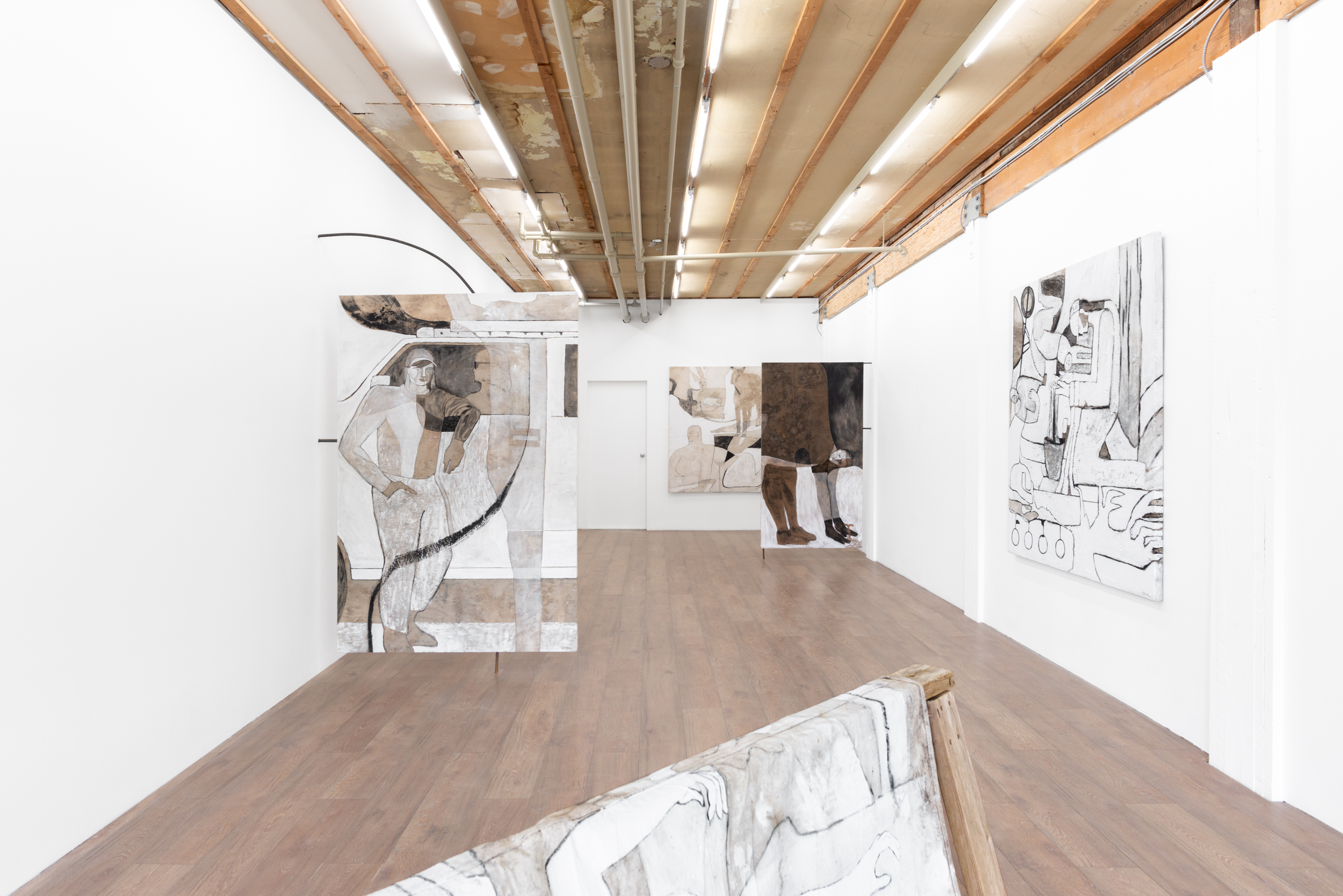

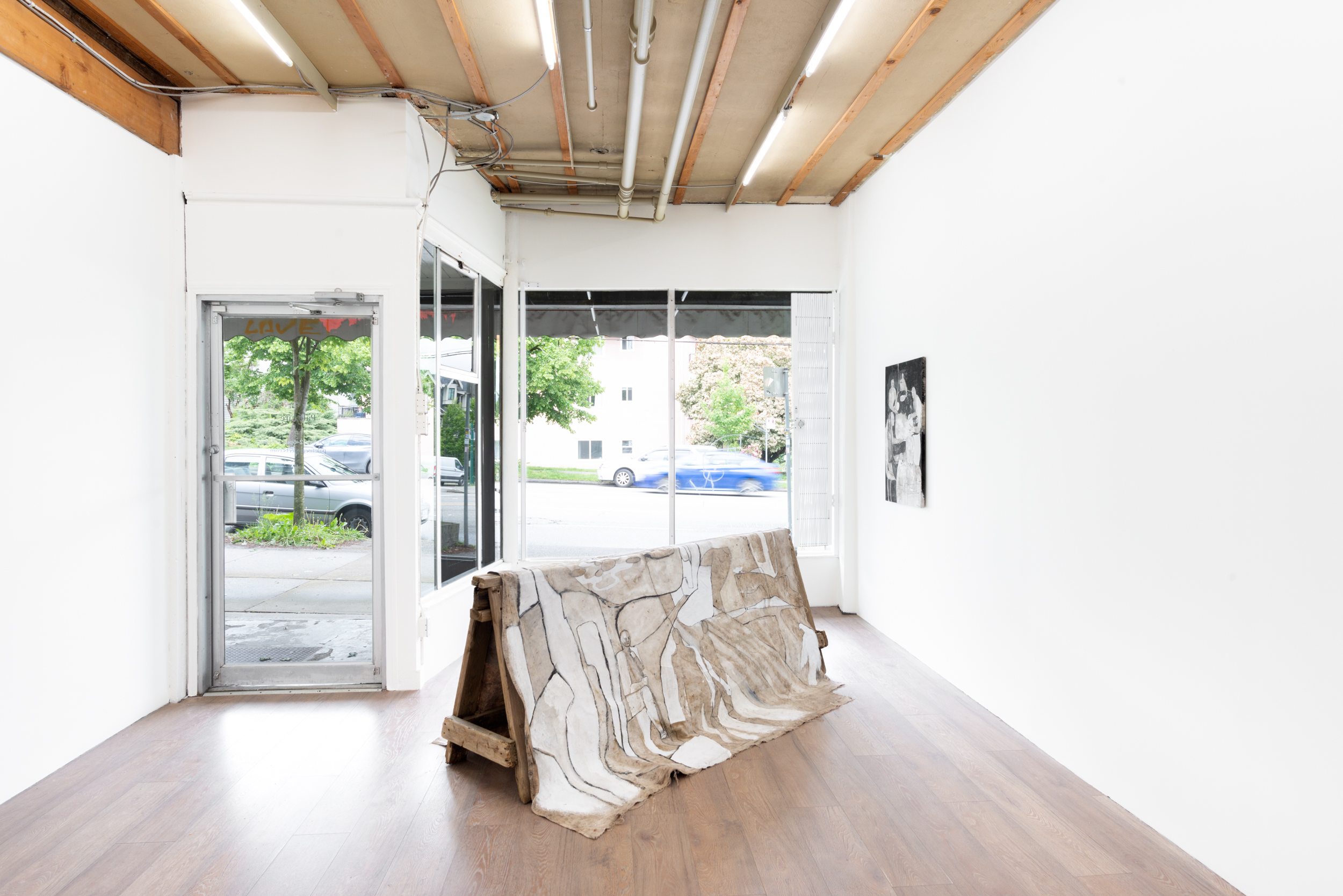


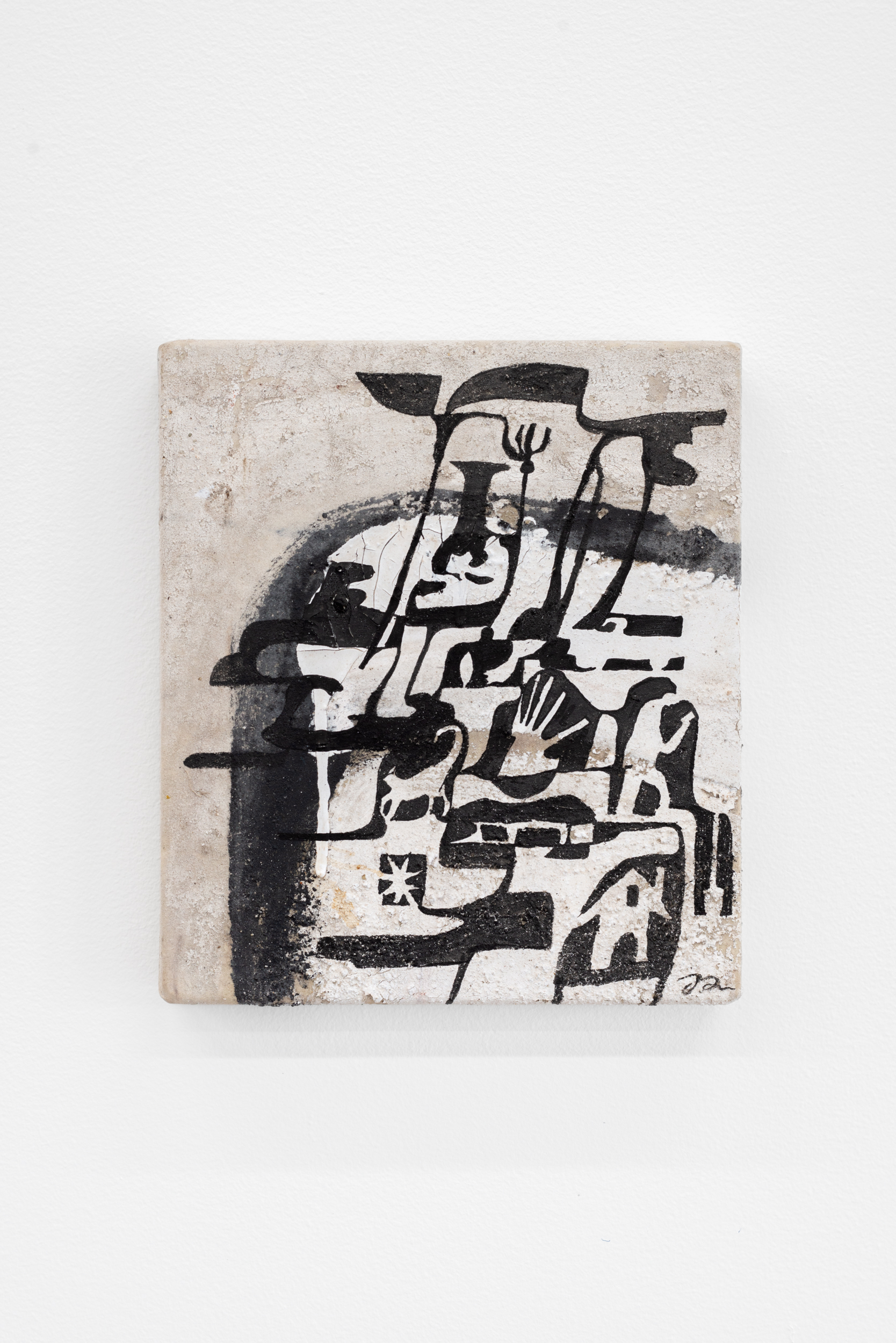
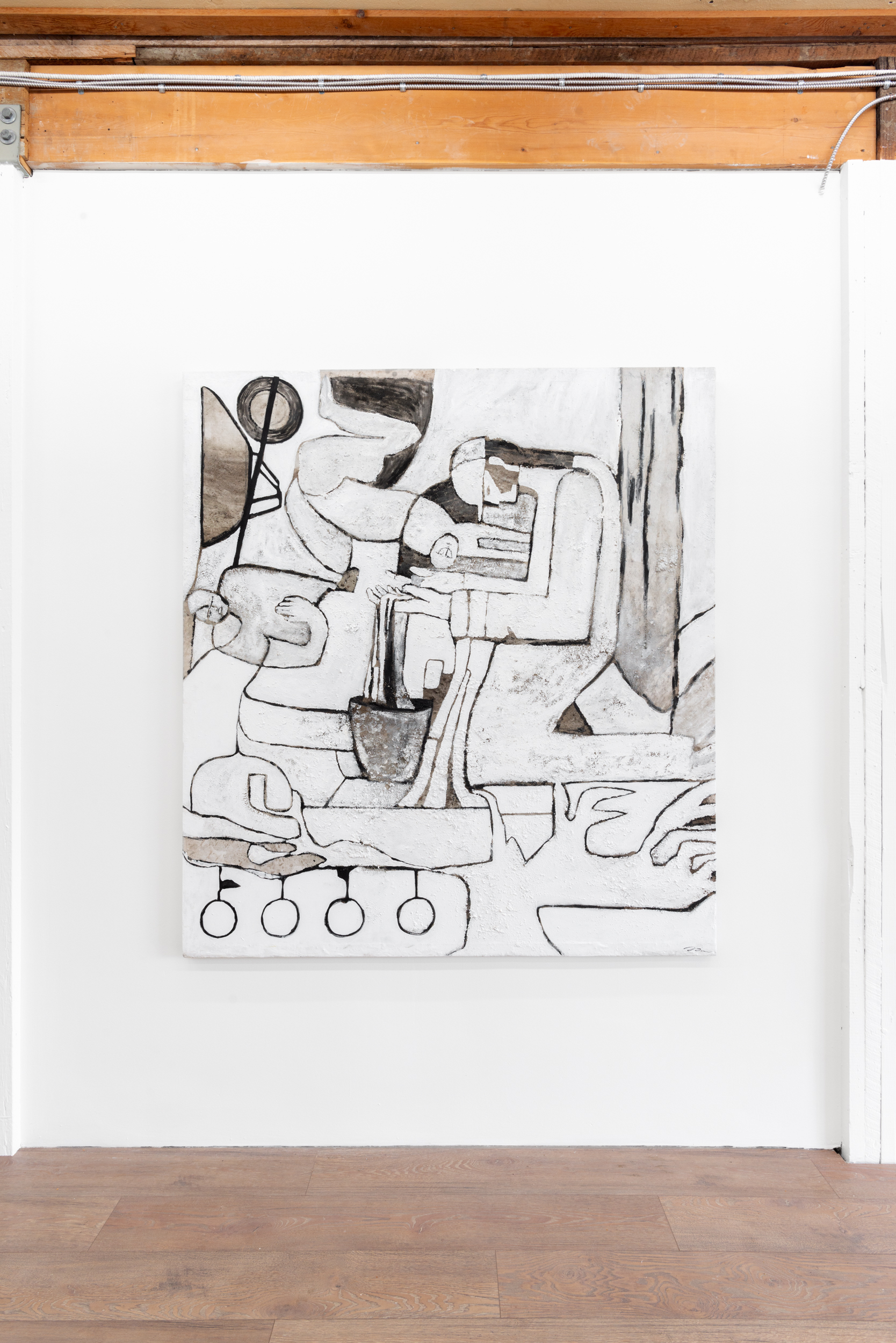

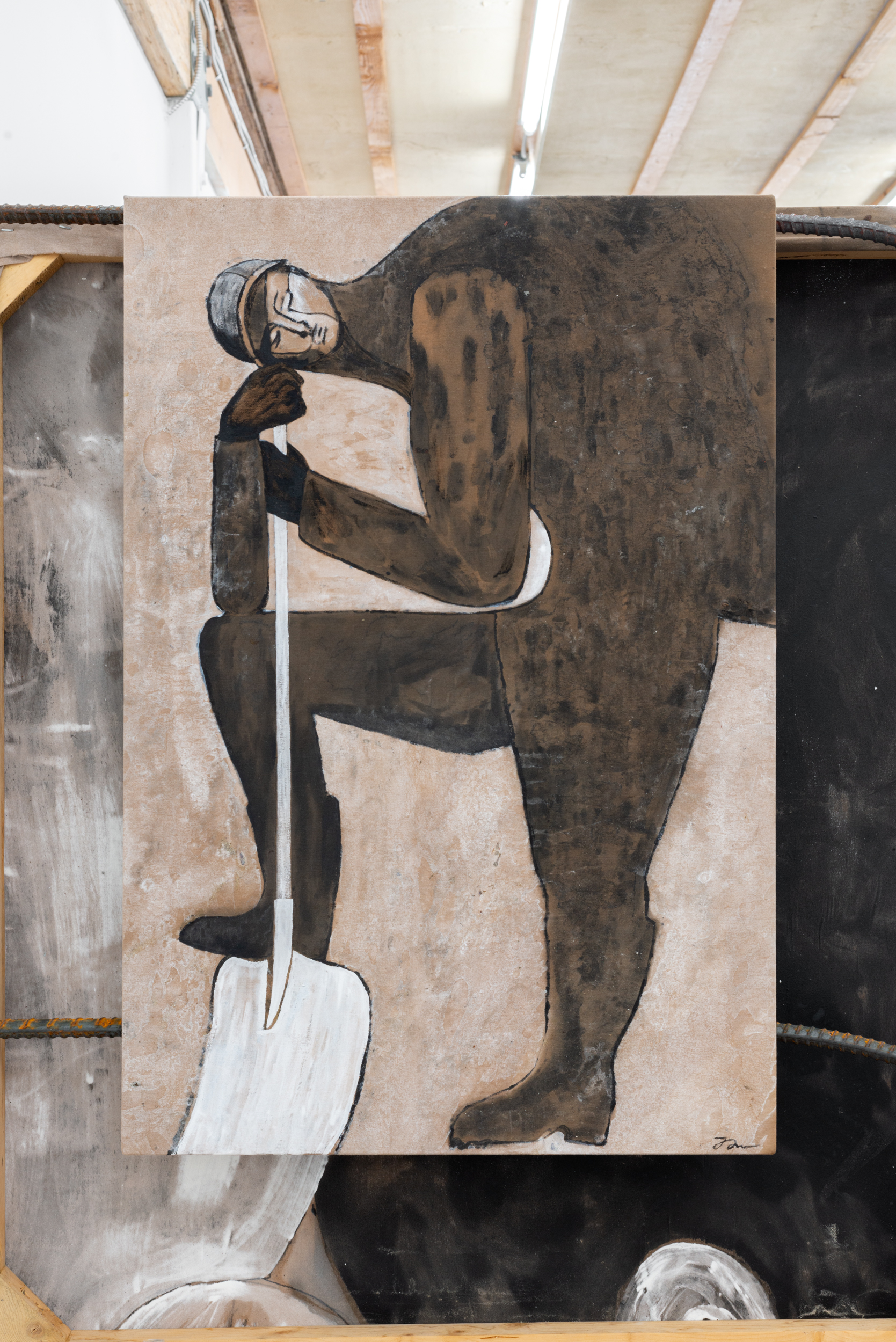

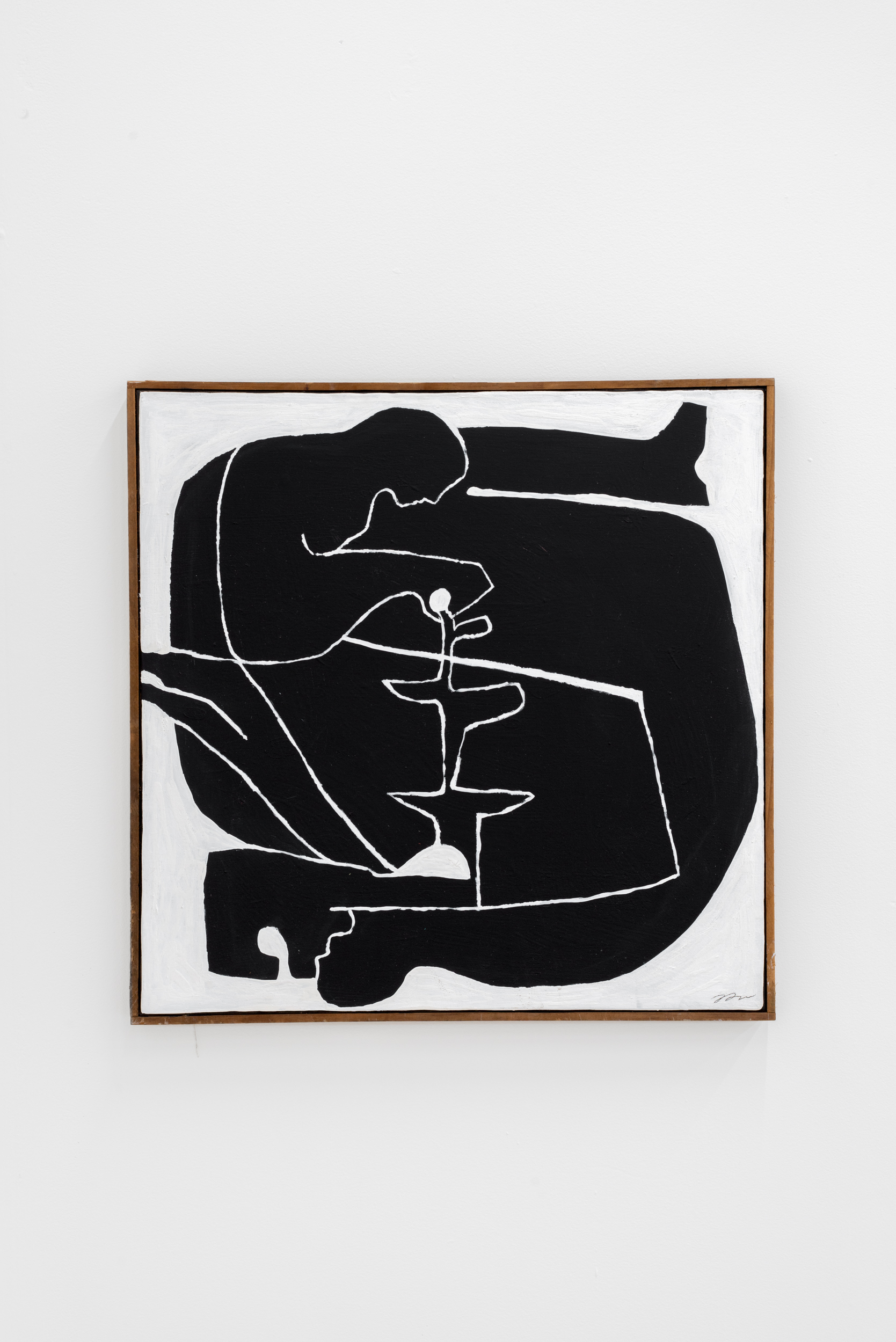
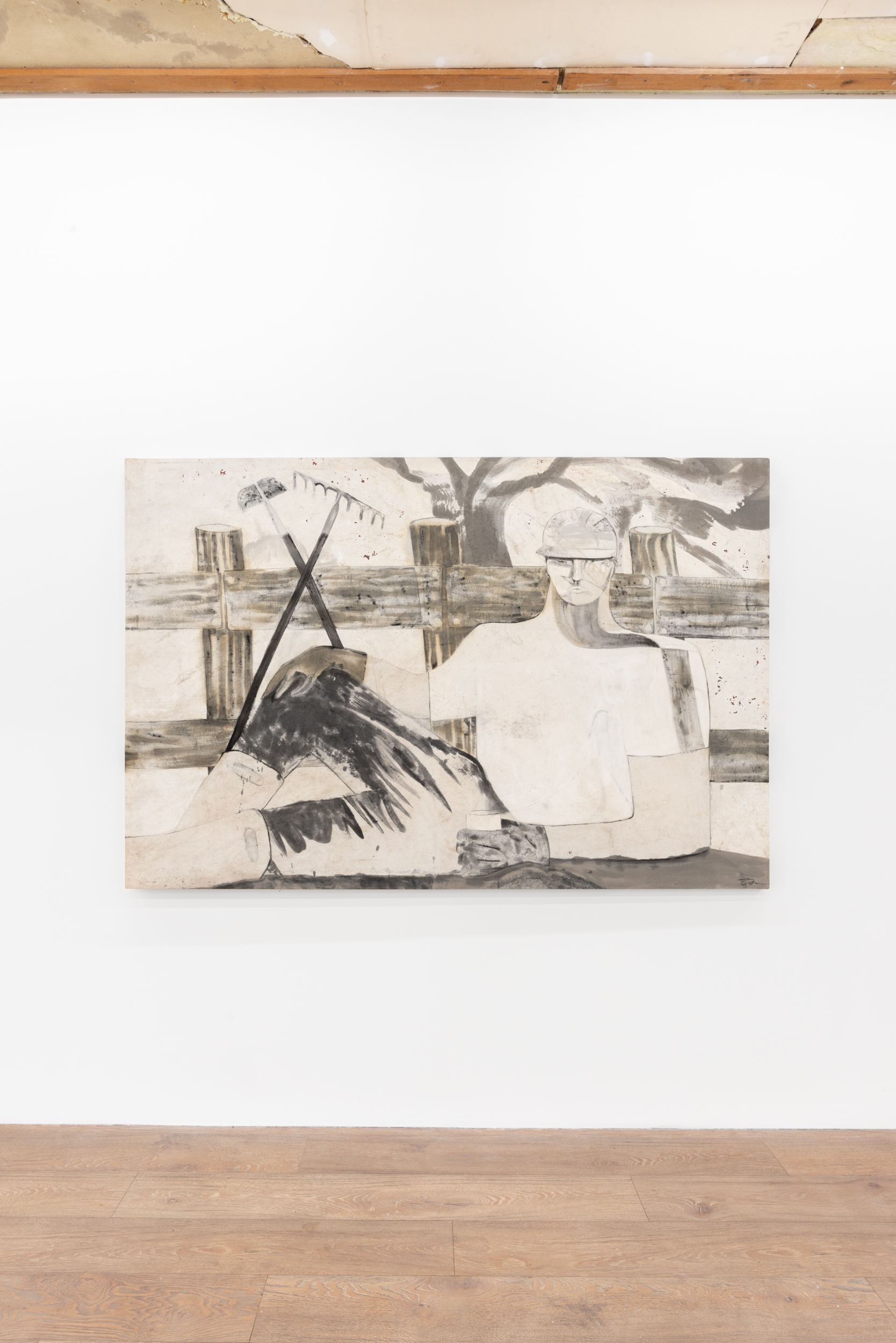
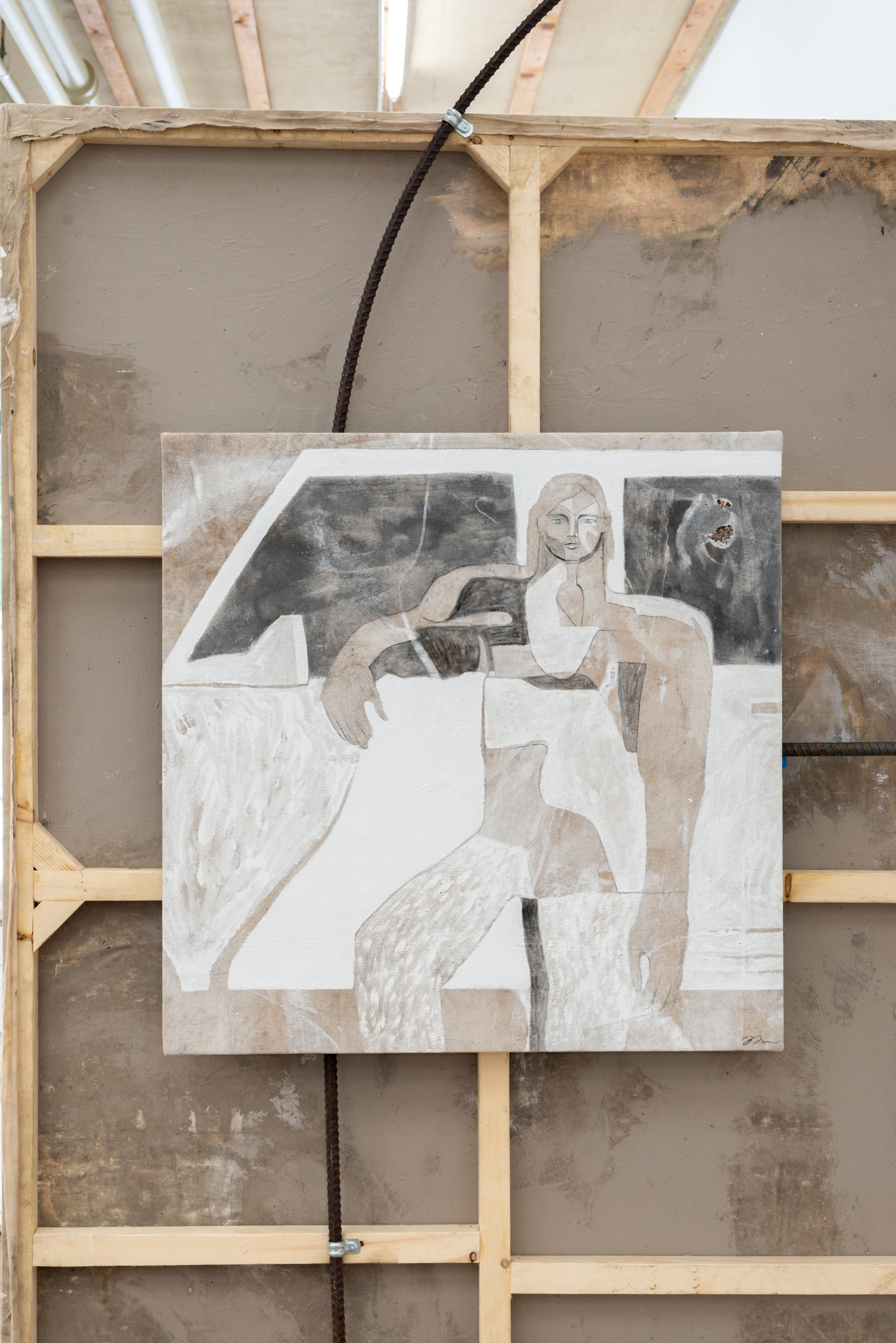

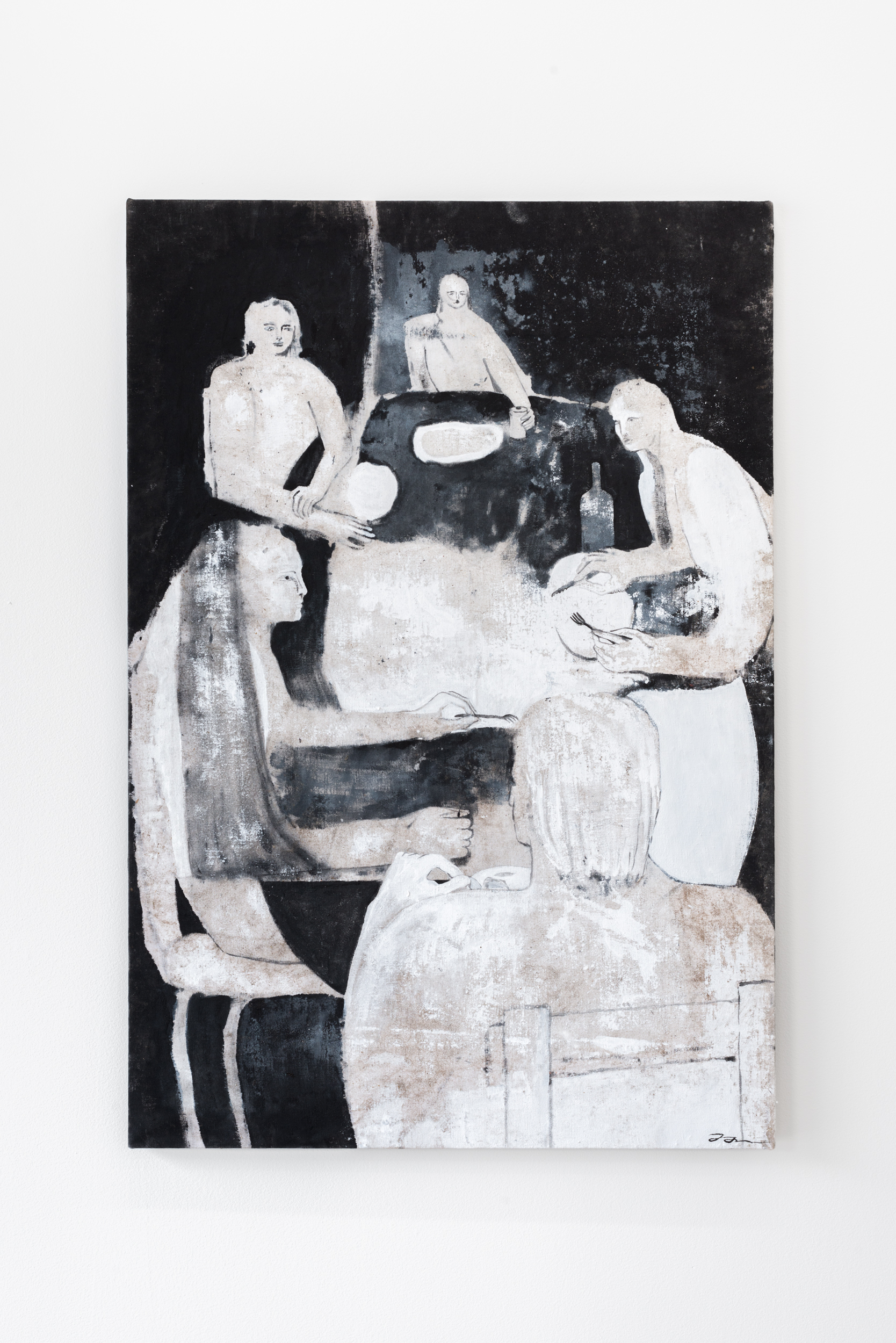
Janine Dunn: cover the taken bone
May 18–June 22, 2024
Exhibition Map
In his essay “The Work of Local Culture,” American writer and agrarian Wendell Berry recalls a galvanized bucket that hung from a fencepost on his grandfather’s farm in Kentucky. For over fifty years, he watched the bucket gather fallen leaves, feathers, nuts and bugs. These materials naturally composted over time into several inches of black humus. On this phenomenon, Berry reflects: “I recognize there an artistry and a farming far superior to mine, or to that of any human. … It has been at work immemorially over most of the land surface of the world. All creatures die into it, and they live by it.” He then observes that a similar process of social accretion, through sharing and circulating stories, is integral to creating a vital local culture and bonded community.
Janine Dunn has begun to share stories of daily life on her farm on the Sunshine Coast through painting. She draws on personal impressions of motherhood, animal husbandry, degradation and repair, shared labour and hospitality, and isolation and solitude. Dunn makes space for the work of dreams, symbols and archetypes to filter her narrative impulses. Influenced by the principles of the early twentieth-century purism movement, which valued basic forms stripped of decoration, she uses methods such as bisection, redaction and abstraction to distill her compositions into simplified figures.
Janine Dunn is an artist and farmer living in Gibsons, BC. Her work is inspired by her environment, agrarian culture and her community. Her paintings are suffused with people, animals, plants, rural architecture, machinery and tools. She works with industrial, agricultural and domestic materials and collaborates with the weather and elements to develop her canvases. In 2023, Dunn won a commission to create a permanent public art sculpture, called The Landing Eye, for the town of Gibsons.



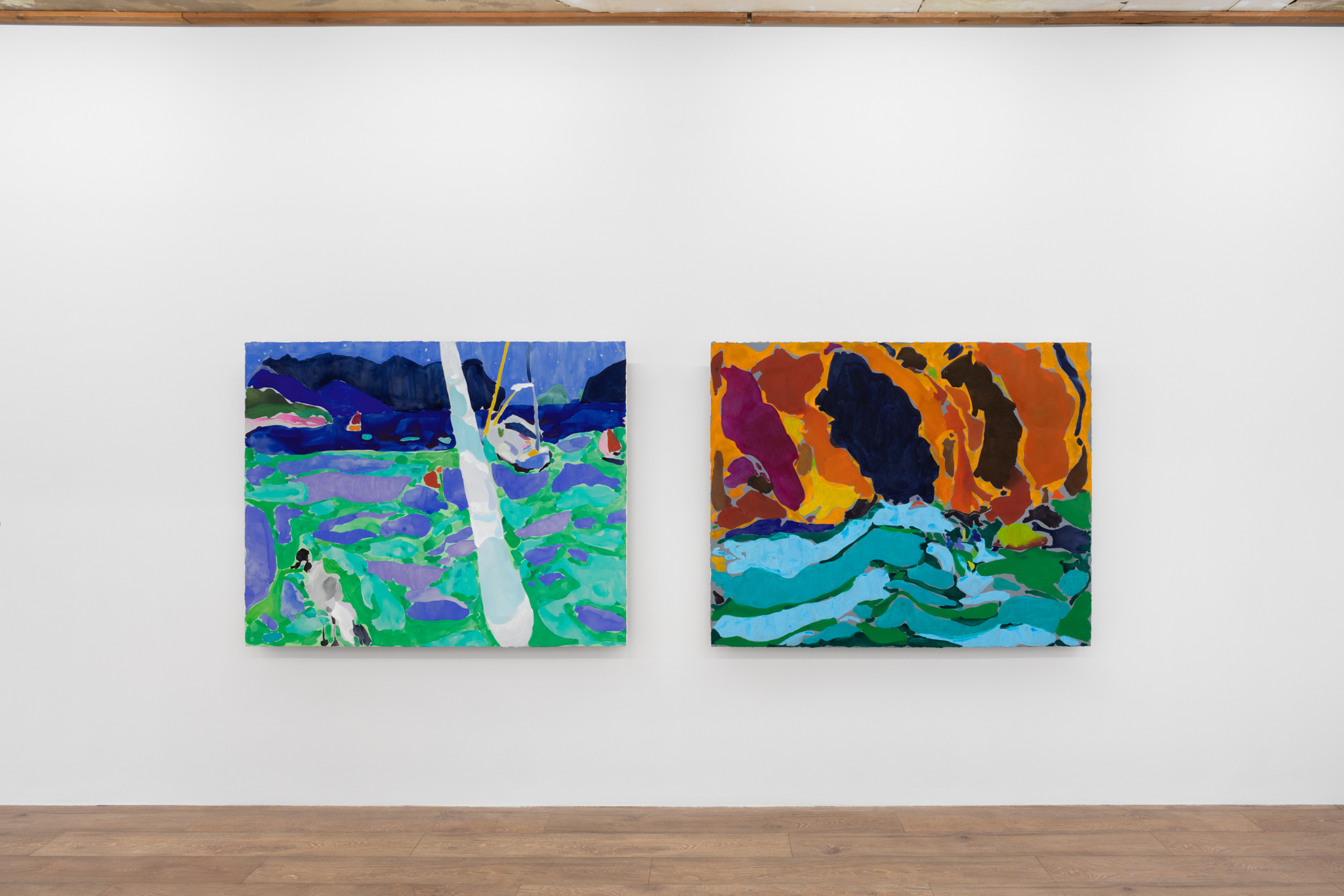
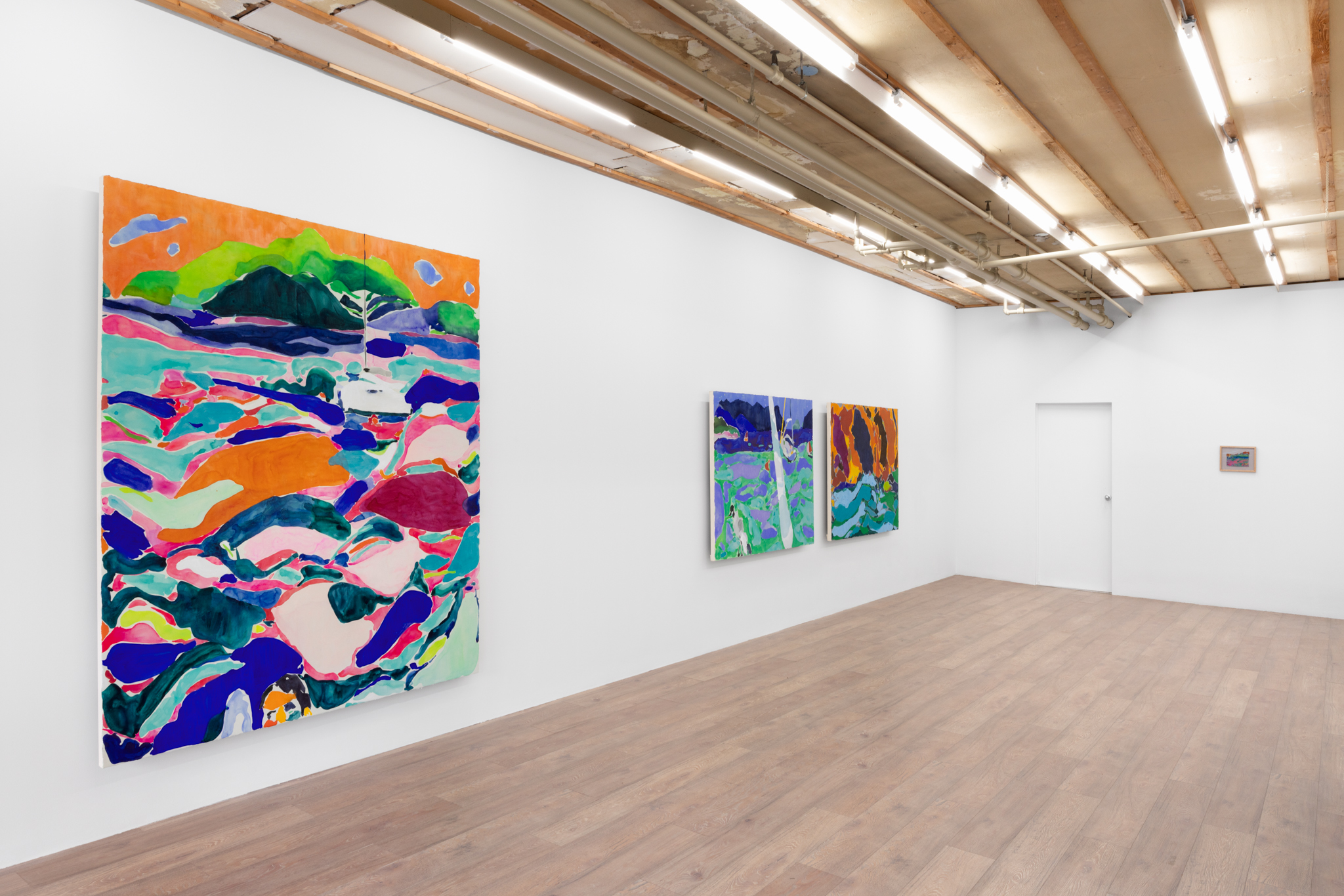
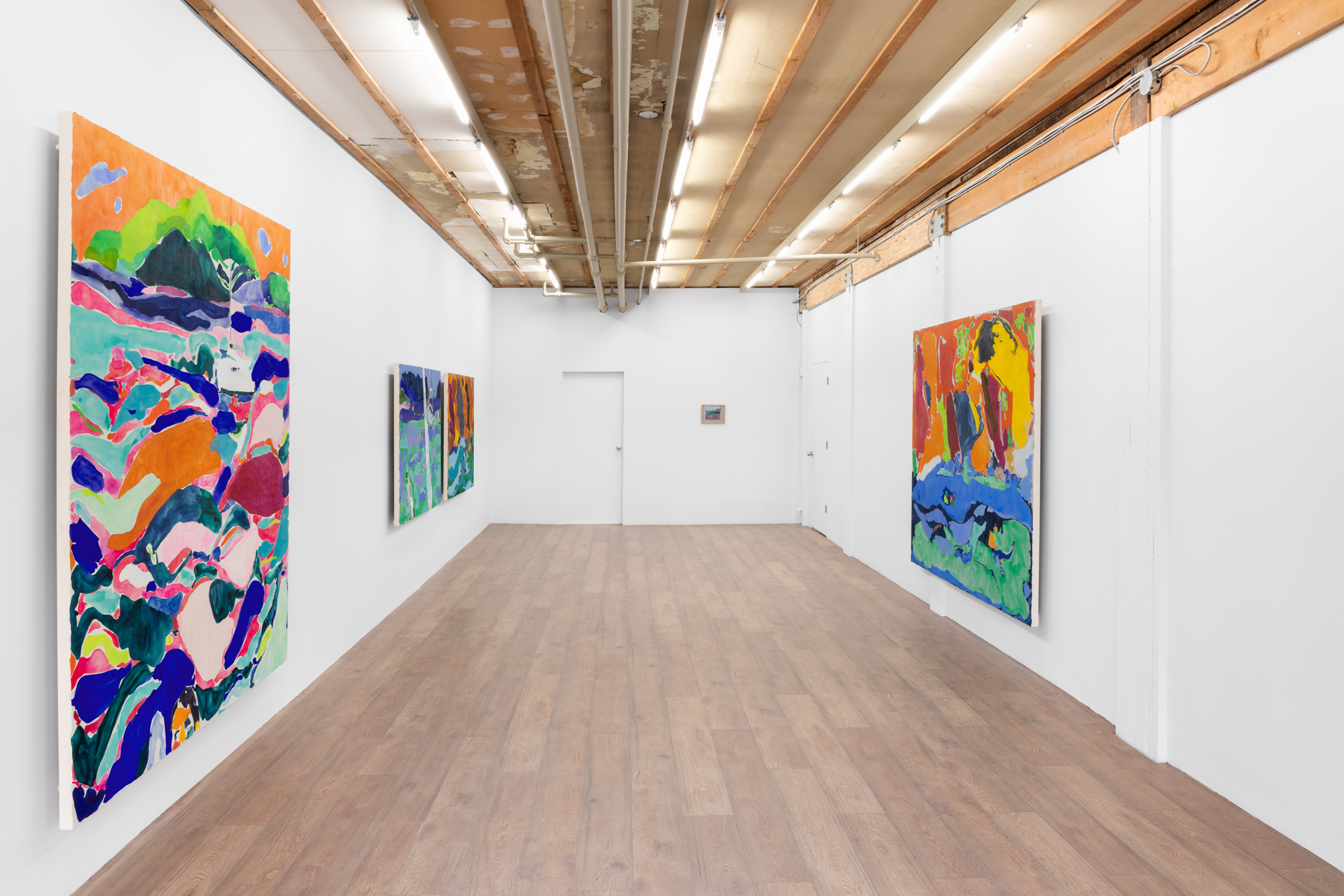
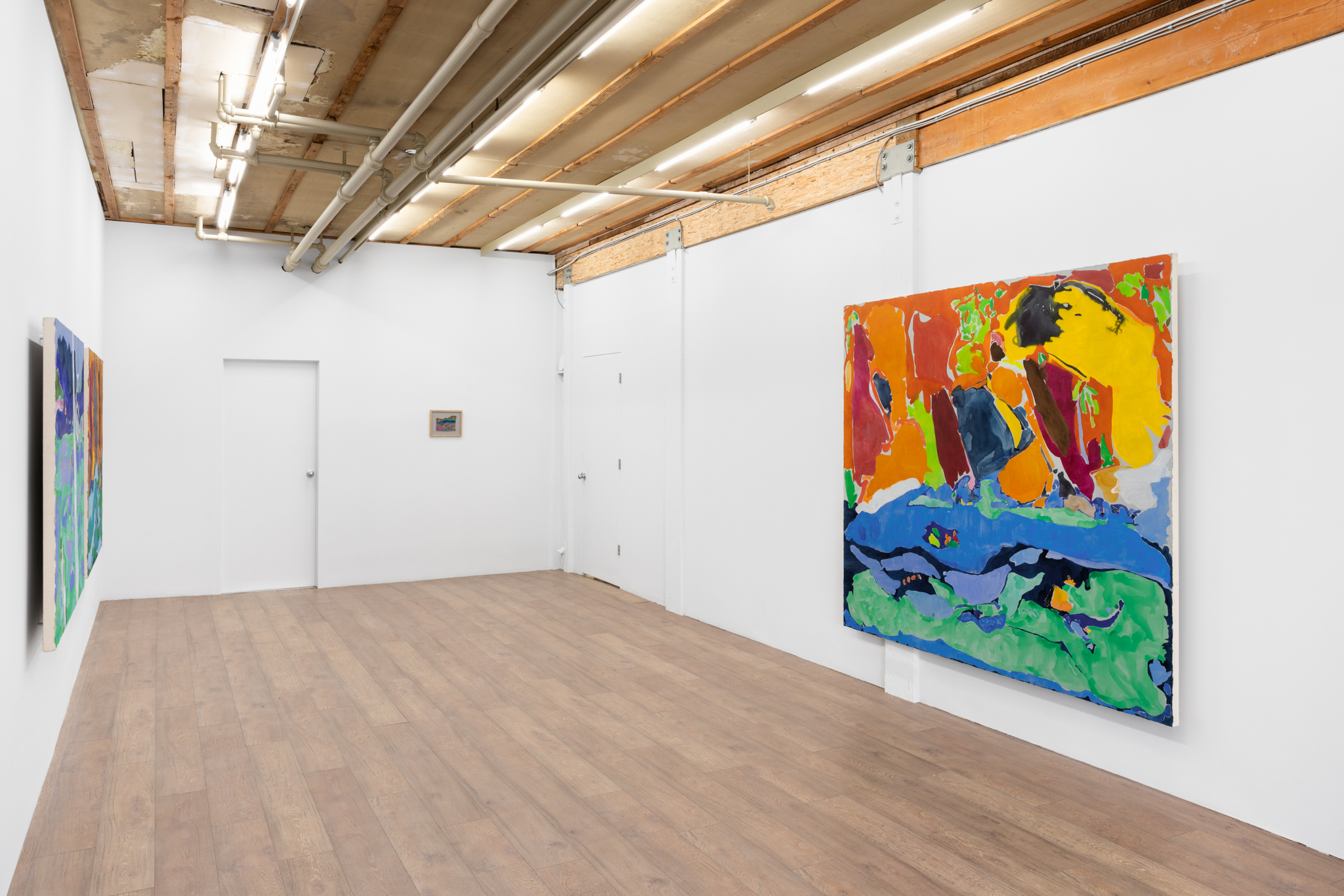
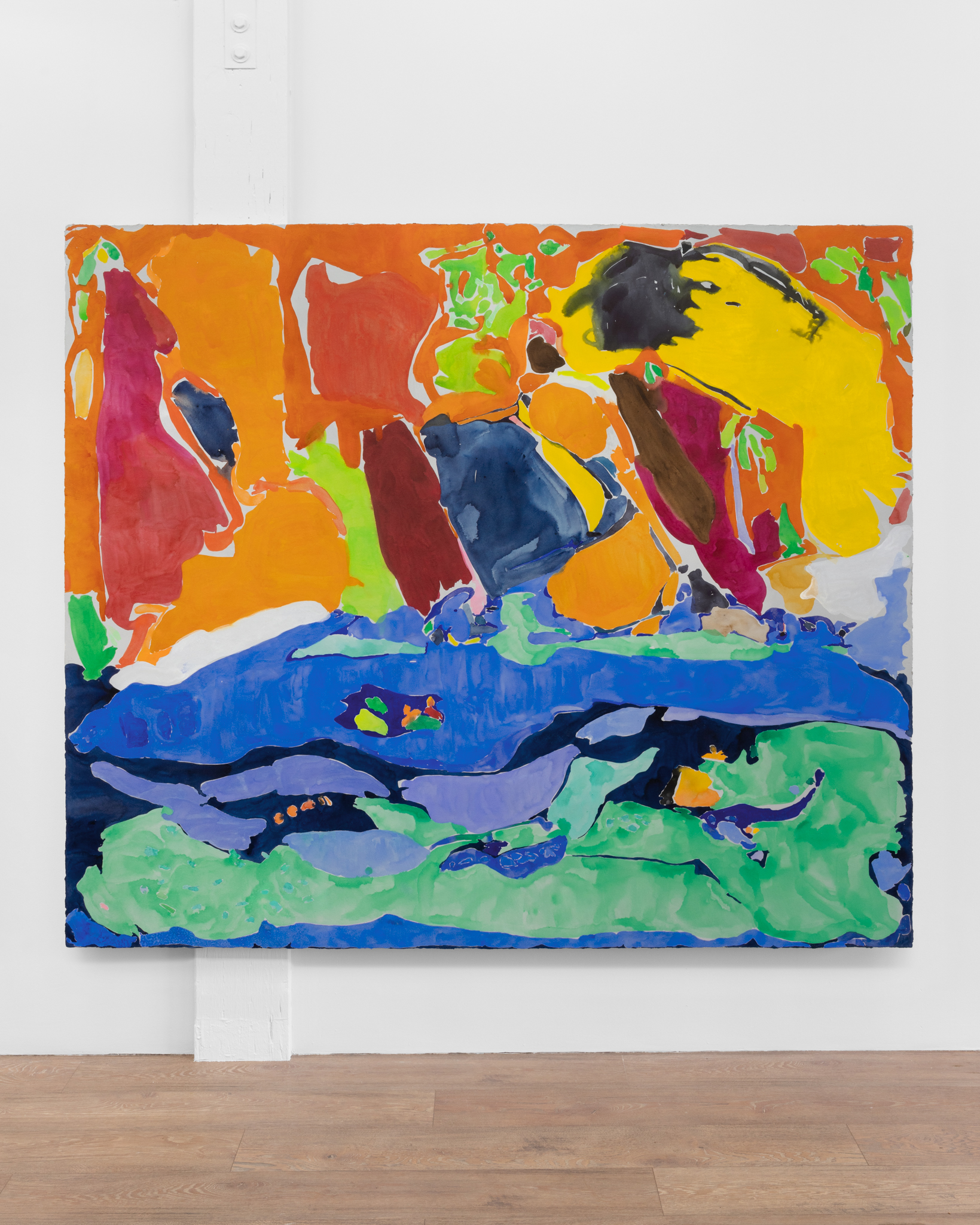
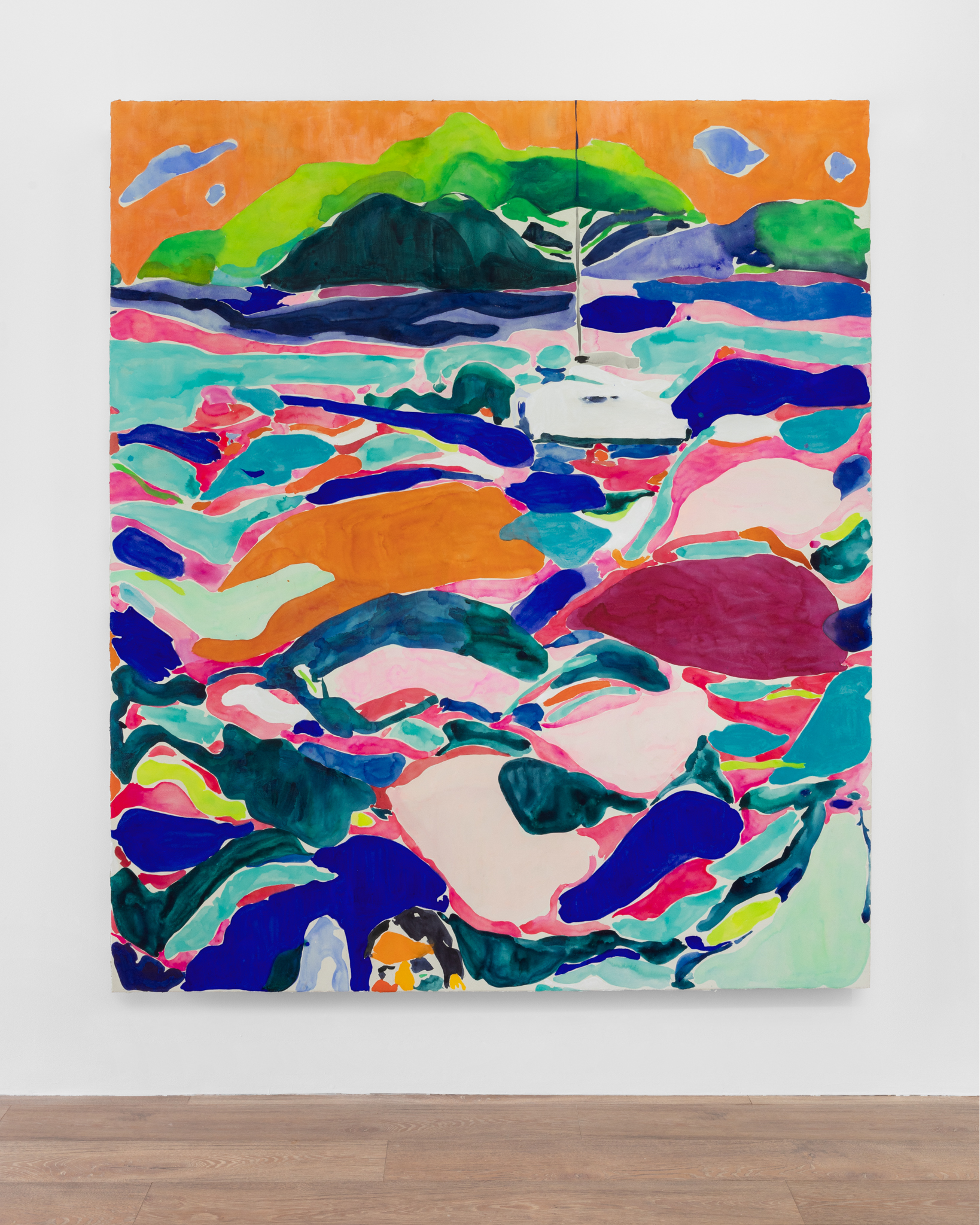
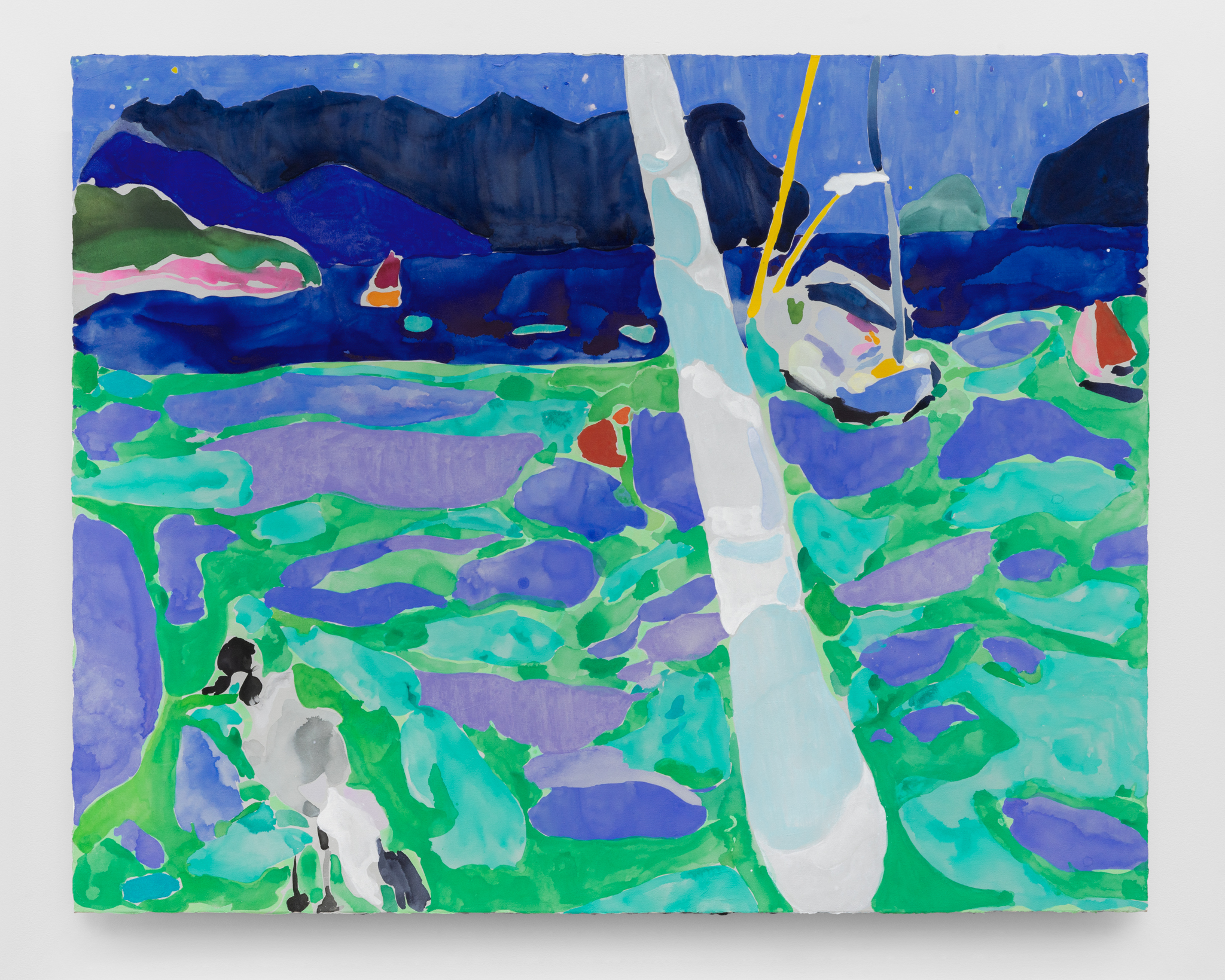
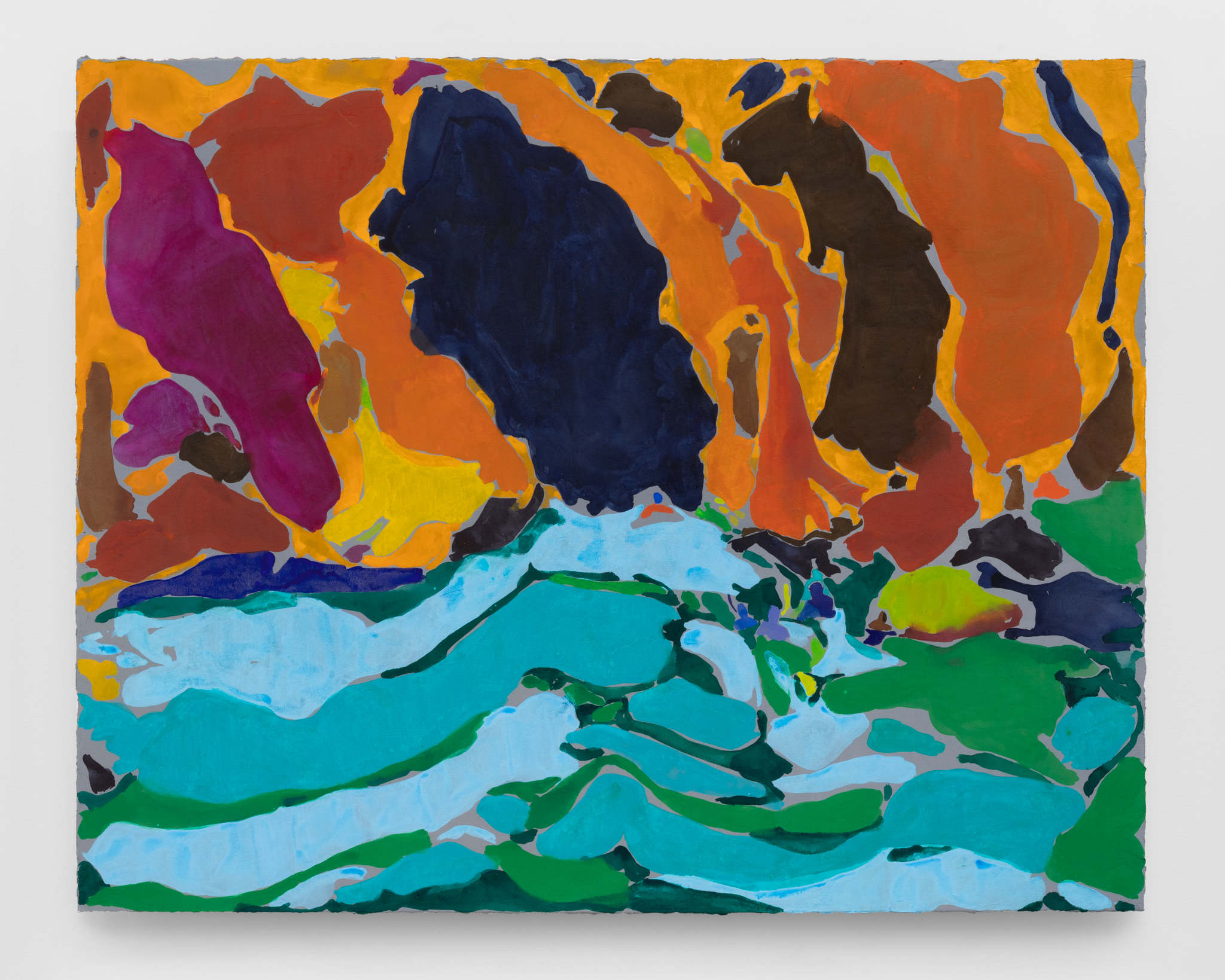
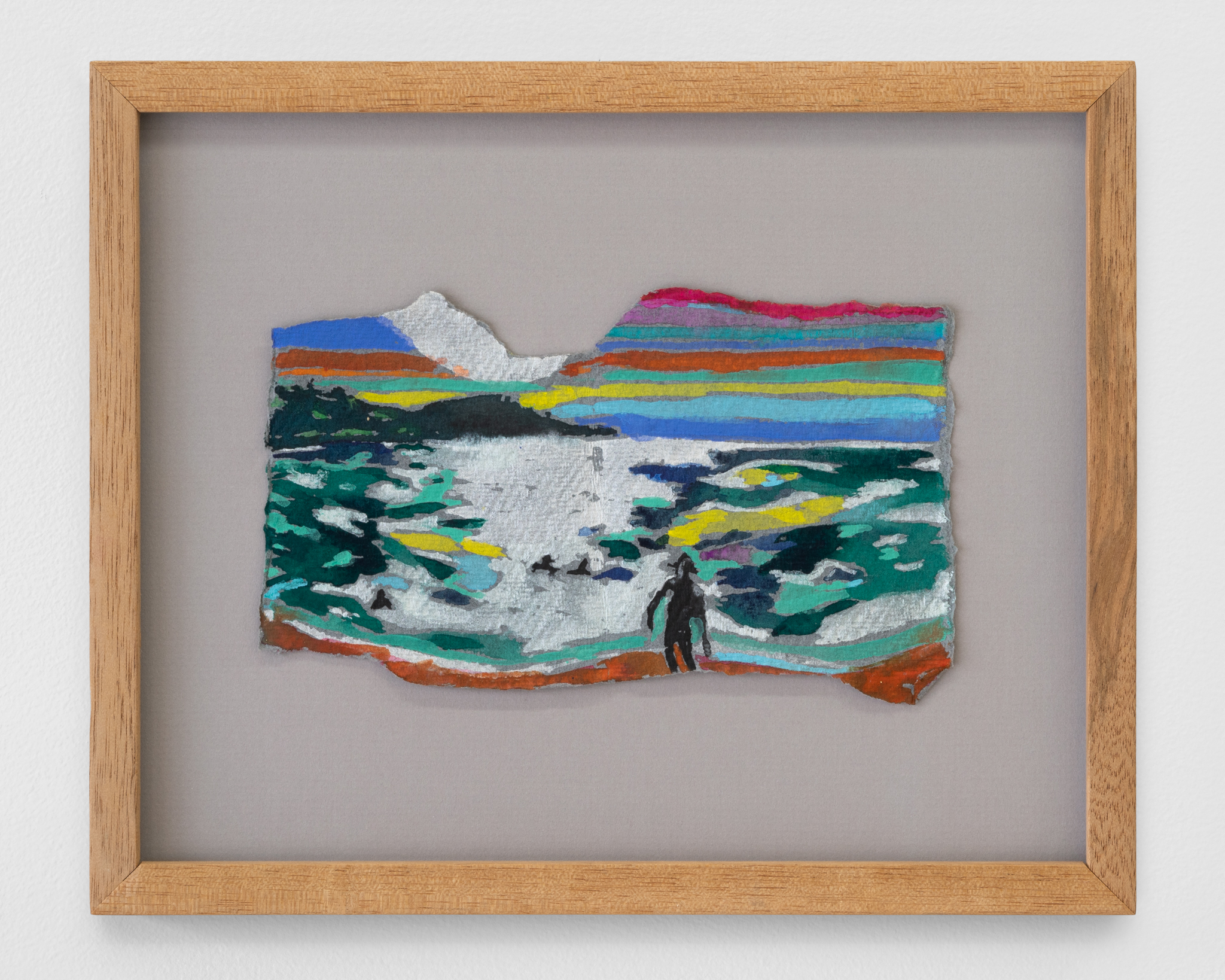
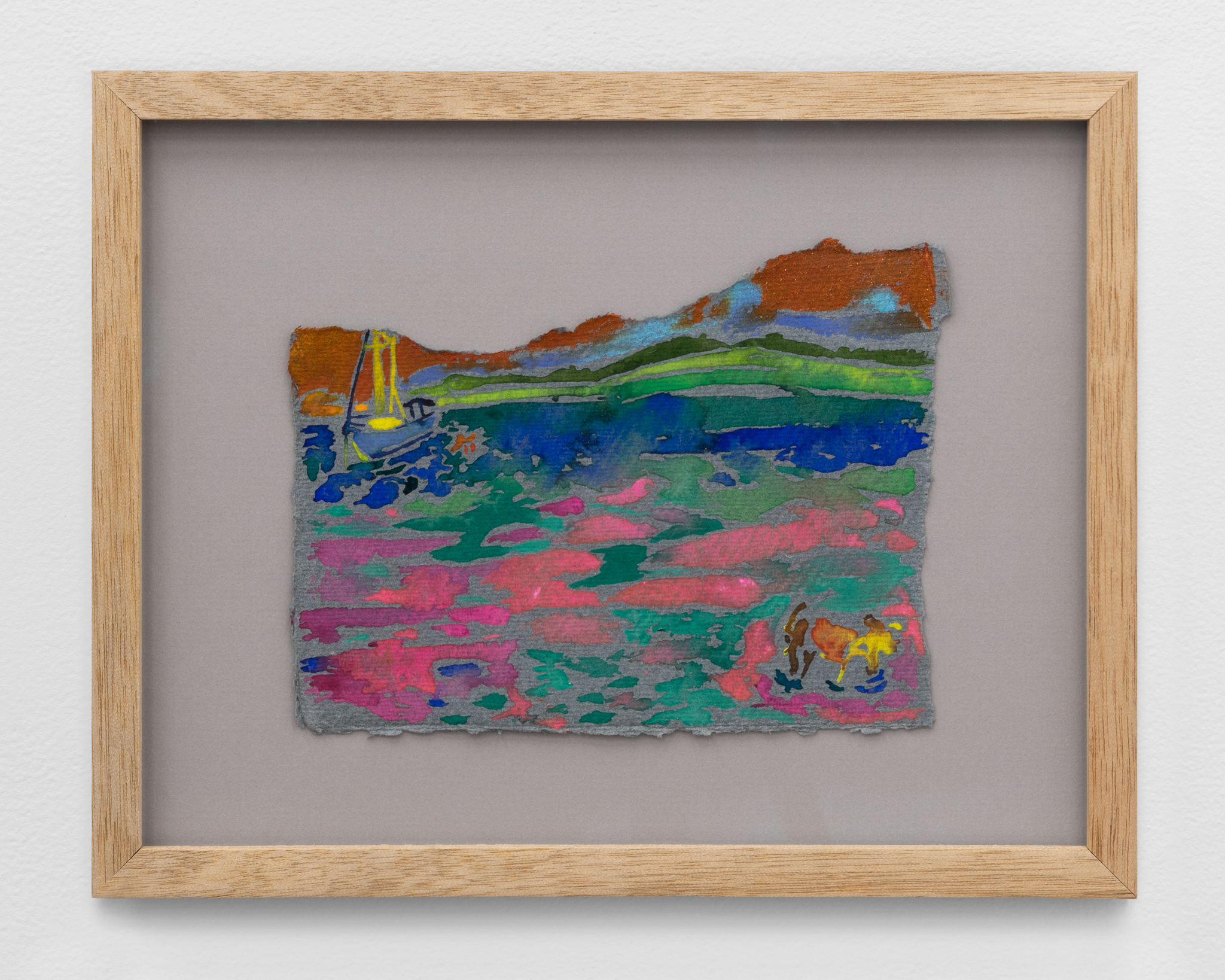
Maru Aponte: Salt Stains
March 23–May 4, 2024
Exhibition Map
Events
Rhys Edwards The Earthen Ocean: Maru Aponte at Pale Fire for Peripheral Review
mira y no les descuides.
las islas son mundos aparentes.
cortadas en el mar
transcurren en su soledad de teirras sin raiz.
en el silencio del agua una mancha
look and don’t neglect them.
the islands are apparent worlds.
cut off in the sea
moving past in the solitude of rootless lands.
above the water’s silence, a stain
—Reina María Rodríguez, “las islas / the islands”
Mona Island, in the Puerto Rican archipelago, has two hundred caves, many of which permeate its coastline and are visible from the sea. These caverns are caesuras in the island’s chromatic landscape. The wind shakes the palms, sand and surf, making sunlight and shadow dance around the still, dark recesses. From a boat, Maru Aponte transcribes the movement and luminosity around her with watercolours on small pieces of paper. She works with the medium because it responds to wind, light and heat, much like the ocean. The plein-air sketches that inform the paintings in Salt Stains express the elements and forces that shape the islands in the archipelago.
Maru Aponte’s artistic journey unfolds through the dynamic exploration of watercolour as a contemporary medium, challenging its historical associations with leisurely pursuits. Aponte is a Puerto Rican artist working in Vancouver, Canada, where she bridges diverse landscapes to evoke a profound sense of place. Intense colour emerges as a pivotal element in her work. This saturation reflects the intrinsic qualities of the medium as well as the vibrant palette of Puerto Rico. Her paintings resonate as a visceral representation of the Caribbean experience—beautiful, cacophonous and authentic. Aponte recently graduated with an MFA from Emily Carr University of Art and Design, Vancouver. In 2023, she had a solo exhibition at Souvenir 154 in San Juan and was granted the Griffin x ECU Fellowship Studio Award at Griffin Arts Projects in North Vancouver. In the summer of 2024, Aponte will present a solo exhibition at Galería Agustina Ferreyra in Mexico City.











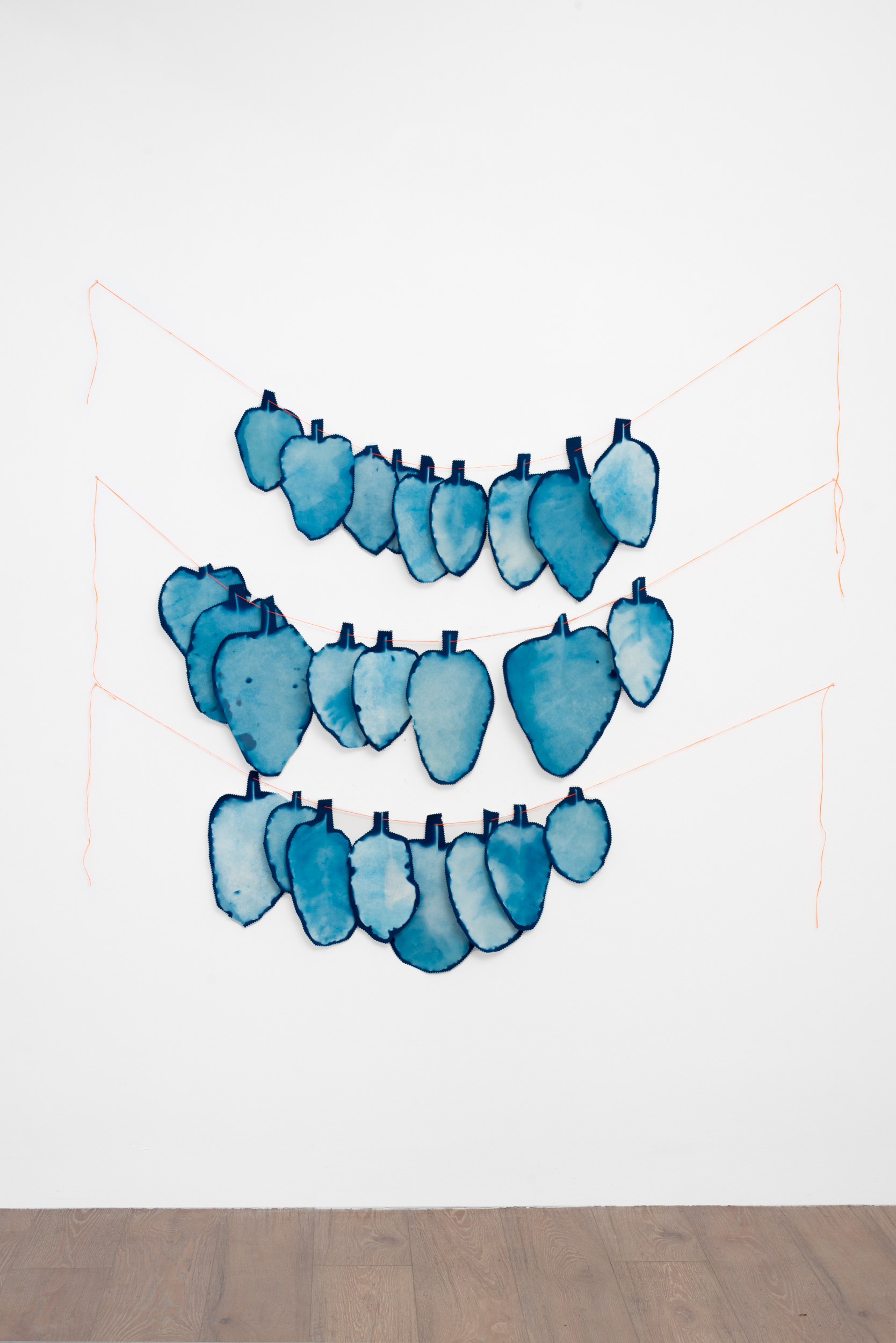






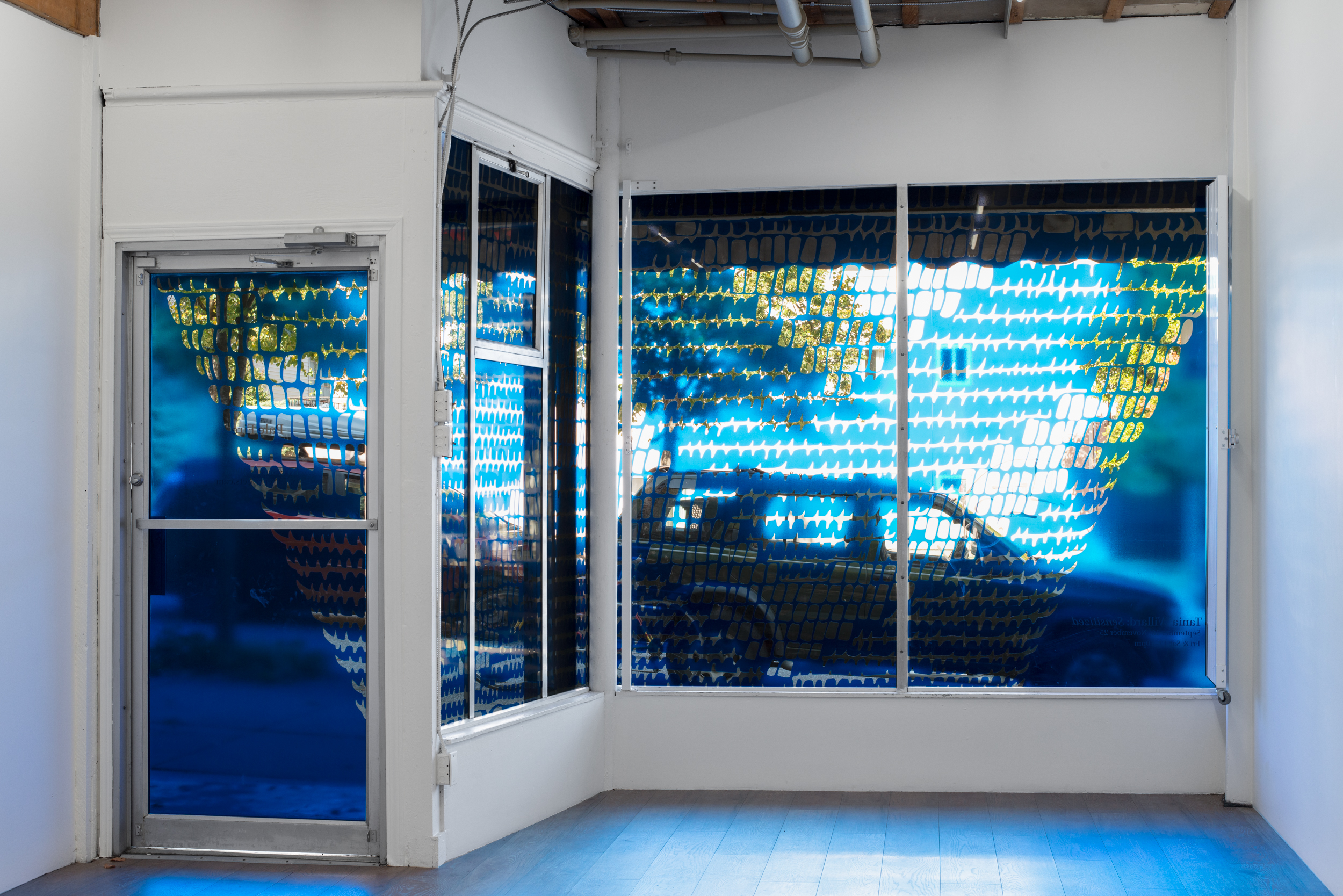

Tania Willard: Sensitized
September 16–November 25, 2023
Exhibition Map
Pale Fire is pleased to collaborate with Unit 17 to present two parallel exhibitions by Tania Willard this autumn. Unit 17 will open Land Bank at an offsite location from October 7–December 10, 2023. The galleries will host a joint event in November.
In mid-August 2023, the Bush Creek East wildfire grew along the eastern shore of Adam’s Lake, creeping through Secwépemc territory toward Little Shuswap Lake in the southern Interior of British Columbia. The Neskonlith plateau, where Tania Willard lives and works, rises from the northern bank of the Thompson River, which feeds the lake’s southern end. In late summer, cottonwood’s leaves rattled in the wind, signalling how parched the earth was. For Willard, dawn and dusk were consumed by harvesting garlic, and her root shed was flush with bulbs strung up to dry. As a precaution, she gathered the soft filaments of fireweed seed and other highly flammable dried plants. One evening, a pyrocumulus cloud rose behind the hills to the northwest, and its dissipation cast a tawny haze. After a heavy rain, which quenched a long period of drought, the concentration of airborne particulate turned standing water the colour of rust.
Tania Willard is a mixed Secwépemc and settler artist whose research intersects with land-based art practices. Her practice activates a connection to land, culture and family, centering art as an Indigenous resurgent act through collaborative projects such as BUSH Gallery and support of language revitalization in Secwépemc communities. Her artistic and curatorial work includes Beat Nation: Art, Hip Hop and Aboriginal Culture at the Vancouver Art Gallery (2012–14) and Exposure: Native Art and Political Ecology at the IAIA Museum of Contemporary Native Arts, Santa Fe (ongoing). Willard’s work is included in the collections of the Vancouver Art Gallery, Forge Project, Morris and Helen Belkin Art Gallery, Kamloops Art Gallery and Anchorage Museum, among others. In 2016, she received the Hnatyshyn Foundation’s Award for Curatorial Excellence in Contemporary Art. In 2020, the Shadbolt Foundation awarded her the VIVA Award for outstanding achievement and commitment in her art practice, and in 2022, she was named a Forge Project Fellow for her land-based, community-engaged artistic practice. In 2023, Willard and the BUSH Gallery project were designated recipients of the Ruth Foundation for the Arts Future Studies award.
Tania Willard: Land Bank
Unit 17 (offsite)
October 7–December 10, 2023
Unit 17 presents four new works from Willard’s series Snowbank and Other Investments (2020–). The series takes inspiration from the artist’s use of a snowbank as a projection screen near her home, and explores financial terms and ideas of value inherent in Indigenous relationships with land that contrast private property paradigms. The photographs depict assemblages of materials such as birchbark, silk ribbon, chains, dyed deer tails, photographs and etchings. Willard’s decolonial content draws on meme-like phrases while meditating on land and economic value, as well as Indigenous land rights. Three of the works were recently shown at the 2022 FotoFocus Biennial at the Contemporary Arts Center, Cincinnati.